These minutes were taken by Floyd Glick with help from Bill Miller.
http://dses.science/wp-content/uploads/2019/11/2019-11-11-DSES-Engineering-Meeting.pdf
Deep Space Exploration Society
Colorado — Radio Astronomy at the Speed of Light
These minutes were taken by Floyd Glick with help from Bill Miller.
http://dses.science/wp-content/uploads/2019/11/2019-11-11-DSES-Engineering-Meeting.pdf
Recently Dr. Richard Russel attended the Very Large Array (VLA) Imaging course in Socorro, New Mexico. The course taught how to take the data sets from multiple large interferometer antenna systems and produce images and science statistics.. This post is an update from Dr. Russel’s post on this topic on October 19.
In this post, Dr. Russel also presents initial results of Hydrogen 21 cm (HI) drift scan measurements at his newly installed 9-foot dish antenna at his home in Colorado Springs.
Please click the link to view the illustrated post:
http://dses.science/wp-content/uploads/2019/11/VLA-Imaging-Results-Master.pdf
By Gary Agranat. Participating were Bill Miller and Gary Agranat.

Bill Miller and Gary Agranat represented the Deep Space Exploration Society at the 2019 Haswell Bazaar last Saturday, October 26th. The bazaar is held at the town’s community center, which is their former elementary school. At the bazaar are crafts, foods, and specialized products sold by local residents. Our antenna site is located just a few miles from the community center. The fair is also an opportunity for the local residents to socialize. And for us in DSES, it is a chance for us to socialize with them too.
Bill Miller created two new display panels for the event. These present an illustrated overview of our work and accomplishments to date. The panels are organized into four topics: infrastructure work, our radio astronomy science, ham radio, and outreach.
Gary brought a laptop which presented a running slide show of about 180 photos of our activities from the past year.
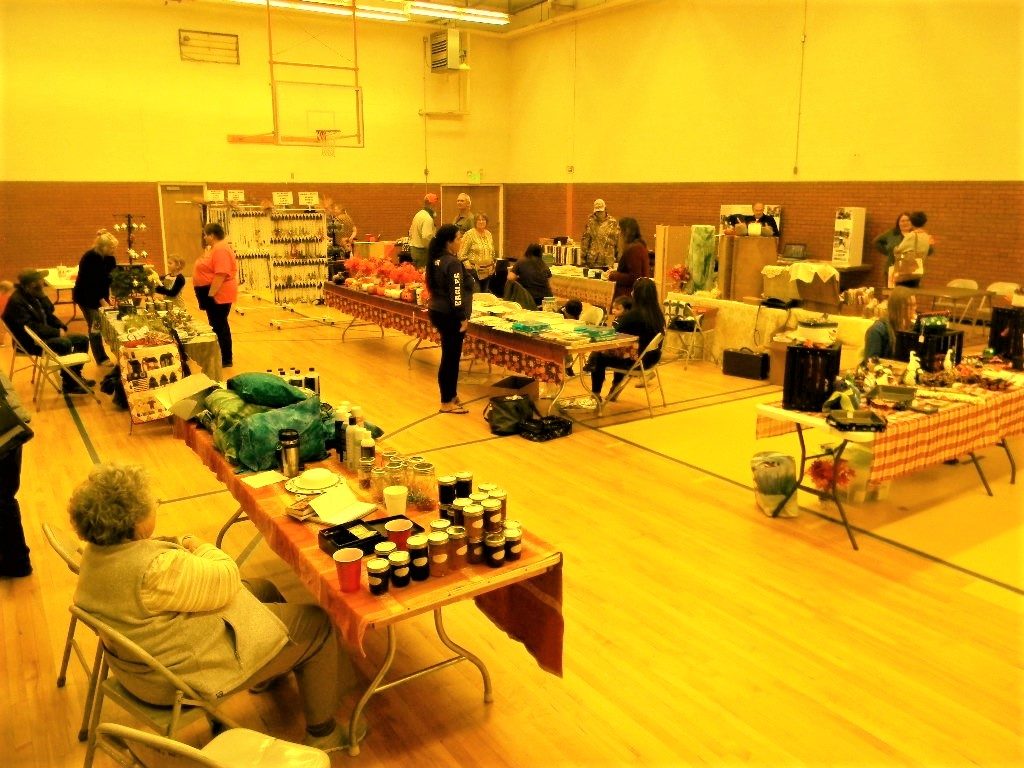
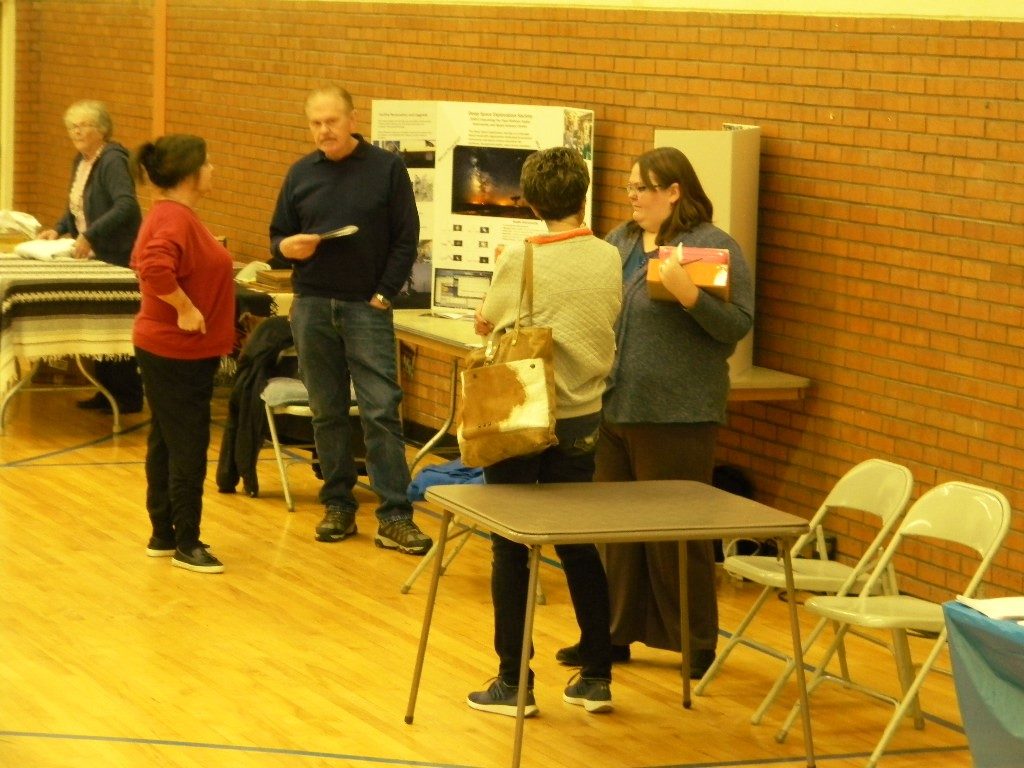
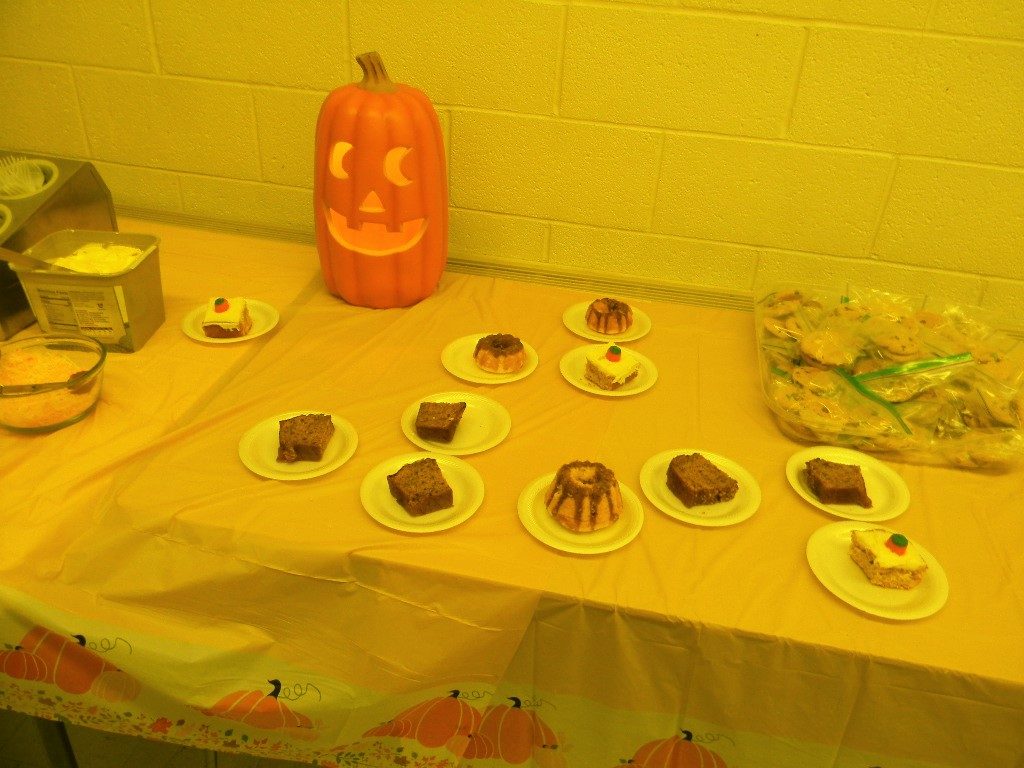
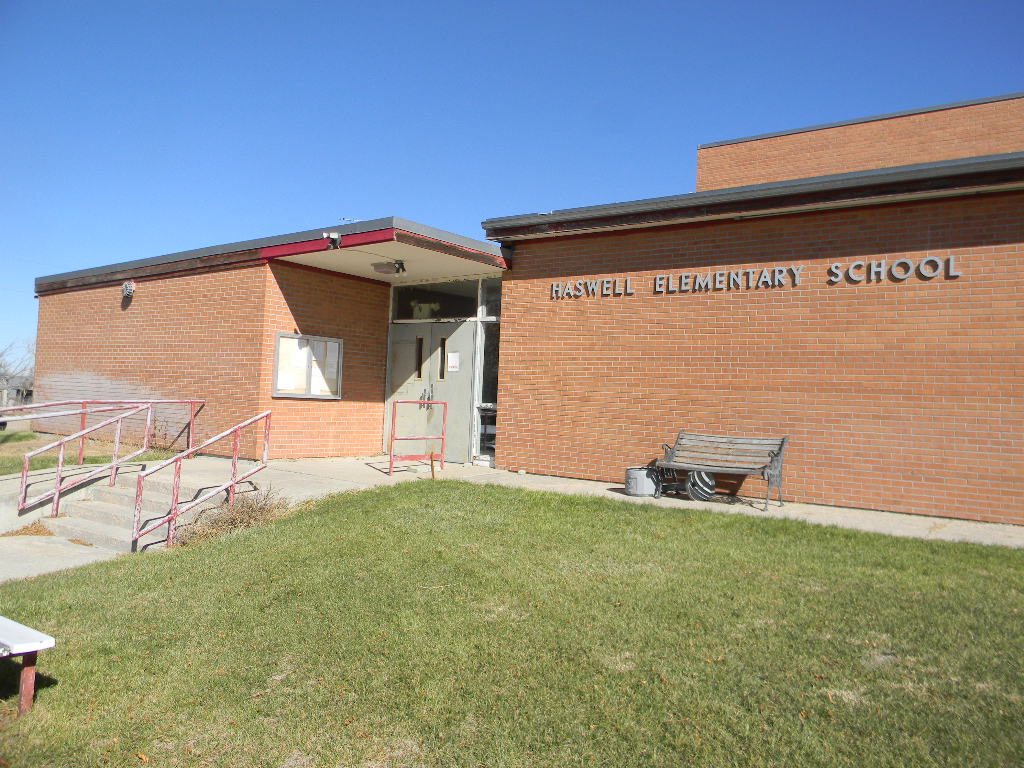
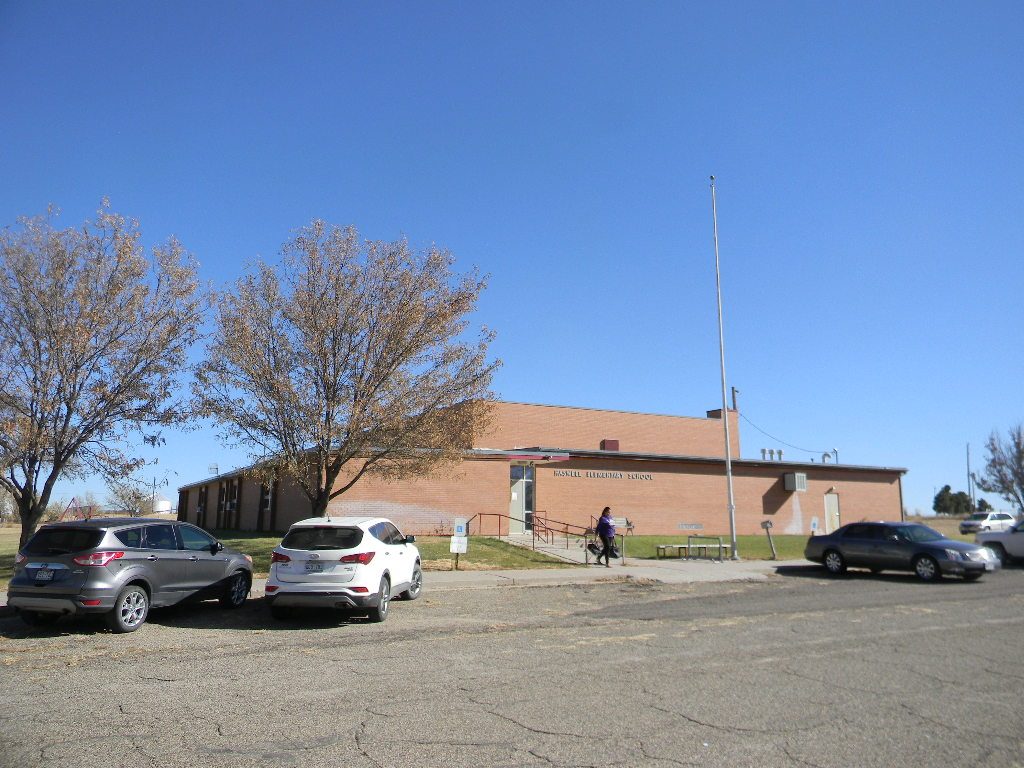
The bazaar concluded by 3 PM. The bazaar was a good opportunity for us to participate in the community activities, to show to the community what we do, and to continue to foster our good relationships with each other.
* * *
During the past year, the local railroad line that runs east-west through town had restoration work begun. The line had been abandoned several decades ago. We learned that the original Haswell railroad depot building is still in town. We were told where it is, and we went to look. We were told that if passenger rail service was restored, there was interest to restore this depot, and bring it back to the rail line and utilize it again. It is the only surviving railroad depot building from the original Missouri Pacific Railroad.
* * *
After the bazaar was finished, we stopped at our Plishner antenna site. There we looked at the progress of the ham radio tower. And Gary retrieved the ham radio log data from the most recent contacts. Steve Plock made our first contacts with the Yagi antenna on the new tower last Friday. He contacted AG5Z in Mississippi on the 20 meter band, and 9Y4D in Trinidad on the 15 meter band.
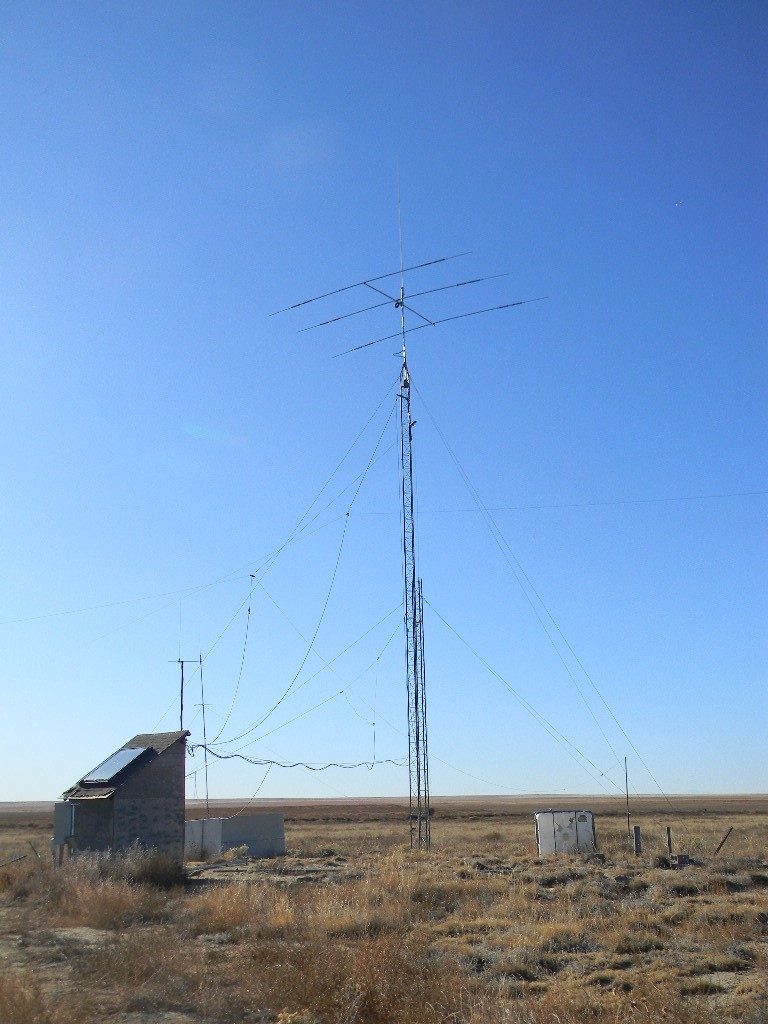

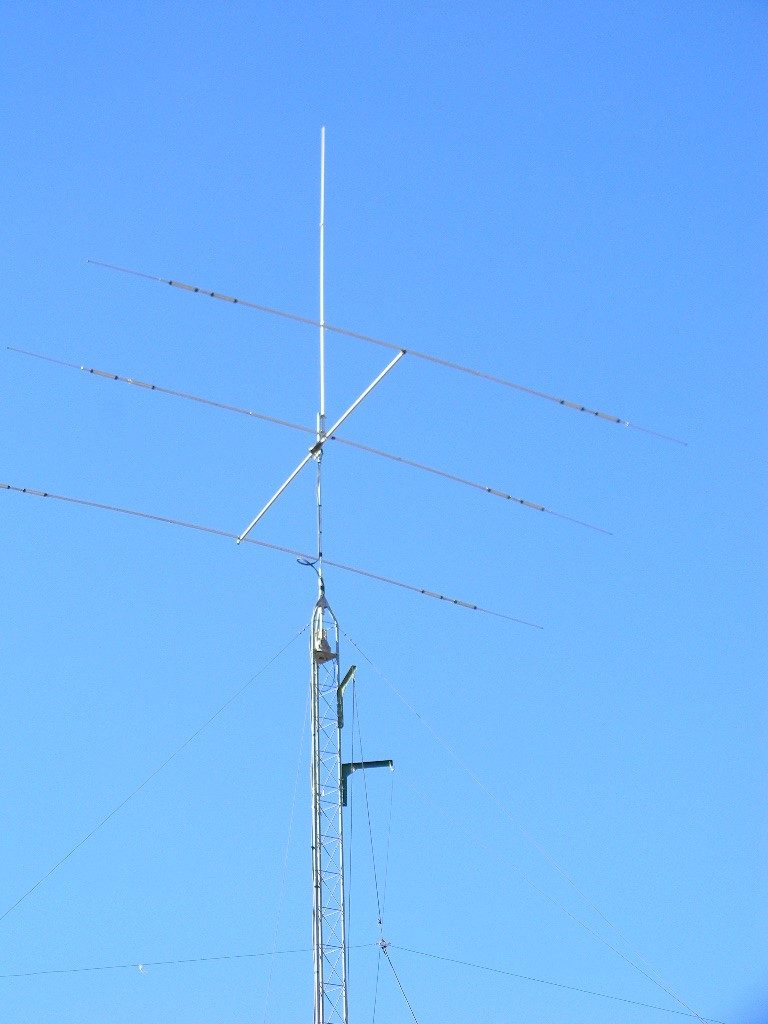
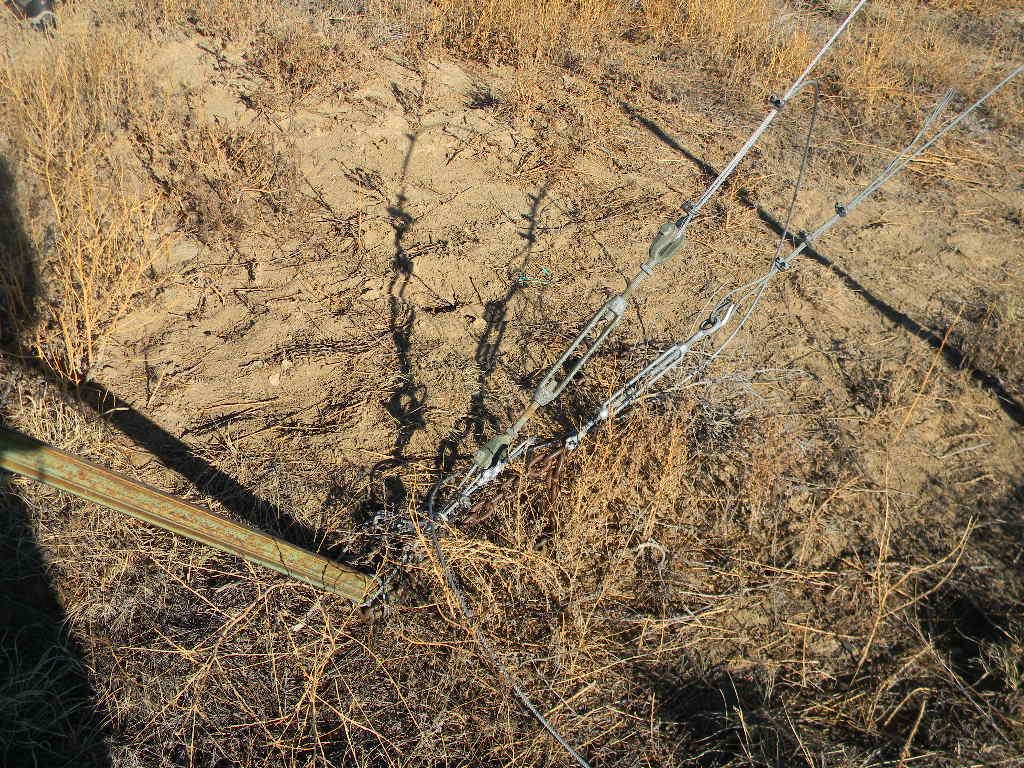
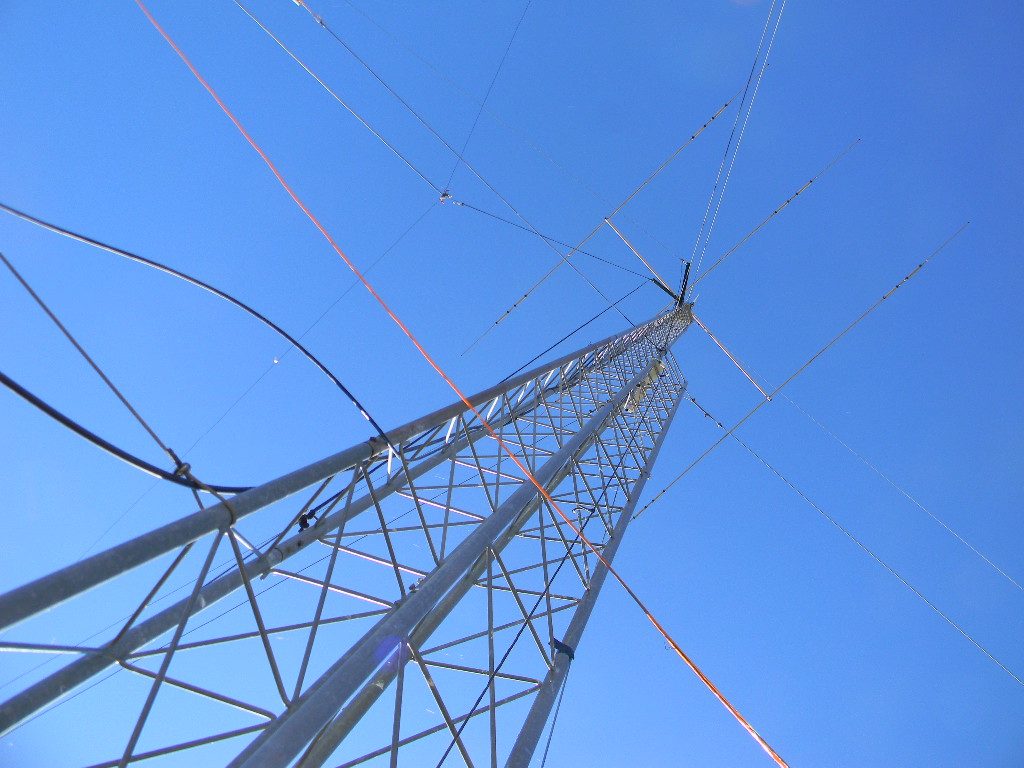
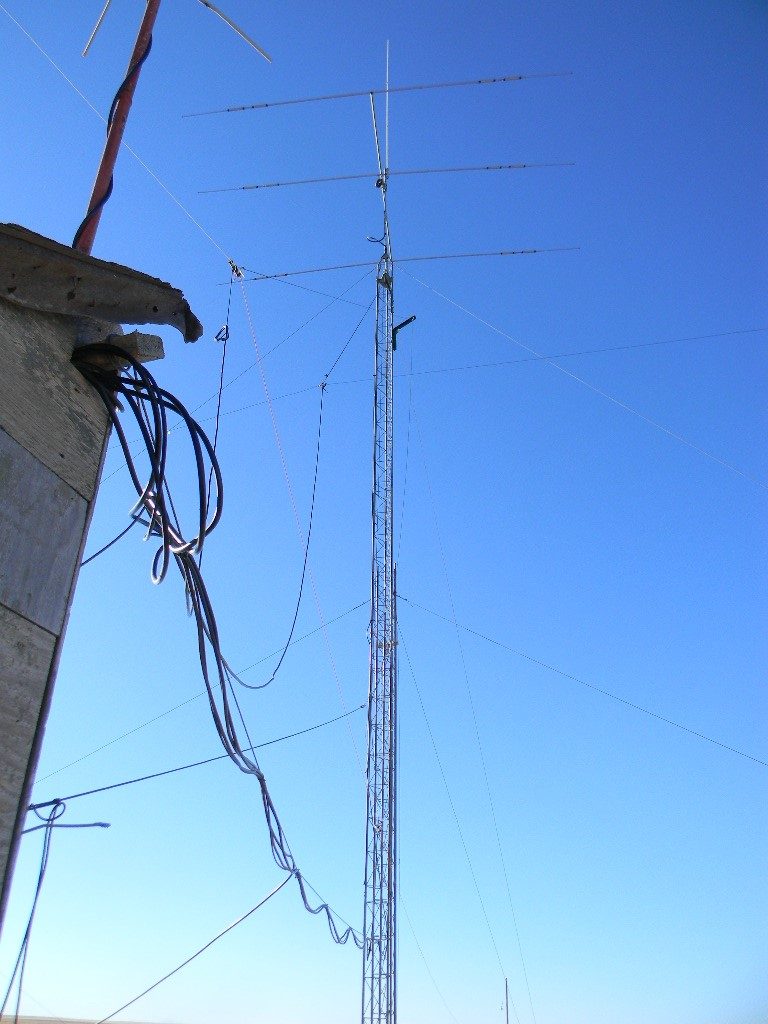
By Ed Corn. Photos by Steve Plock.
Steve and I went to the project. We had perfect weather.
We got the messenger cable between the tower and dog house up, and we got the coax cables strapped to the cable. We dressed the cables in the bunker with the cable end for the Tribander at the radios. Steve turned the radios and made a contact with one of the islands (a 9Y, Trinidad and Tobago) on 15 meters. He also made a 20 meter contact with Mississippi. The Tribander is working well.
I put the batteries in the new CO detector and left it on the desk with the fire alarms. I will complete the install on the next trip down.
Steve has pictures of the messenger cable and the used gas grill he picked up. I fixed the grill’s electric igniter.
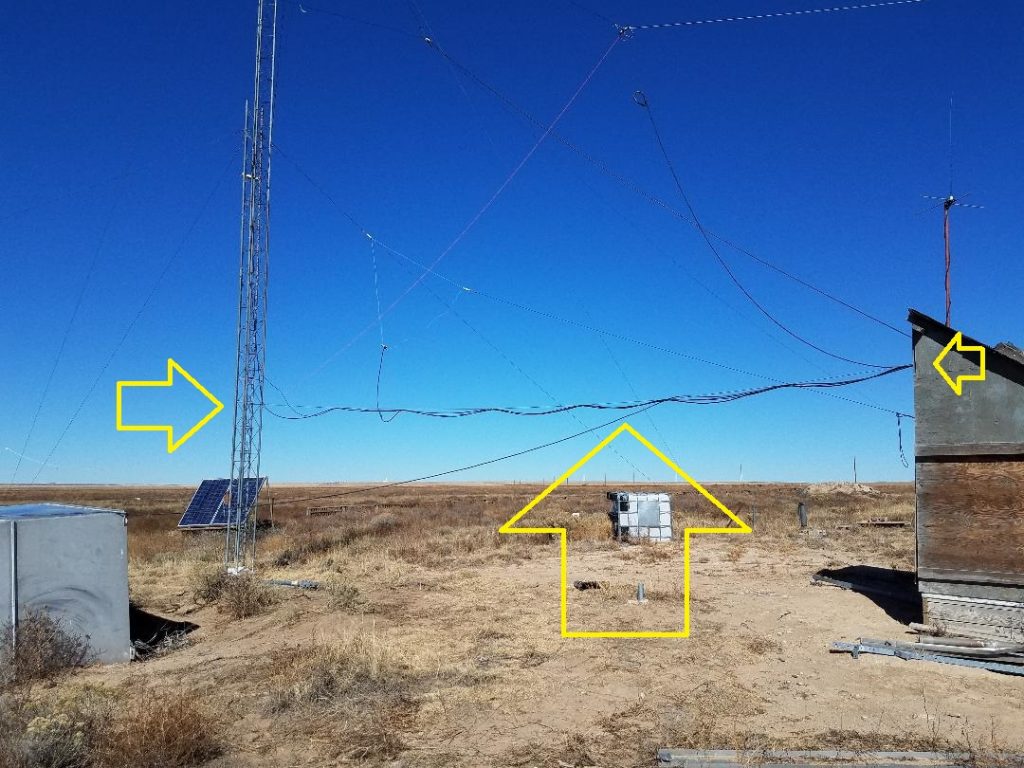
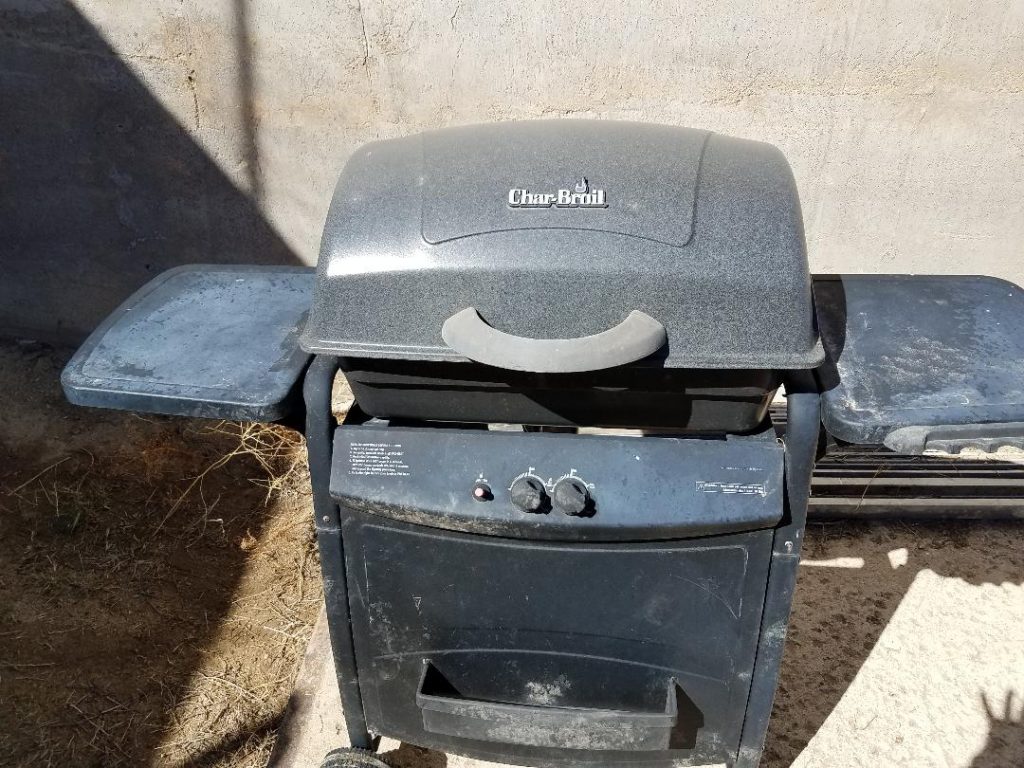
73’s
Ed KC0TBE
Plishner Antenna Site Work Trip Report. By Gary Agranat. Photos by Steve Plock.
Ed Corn, Steve Plock, and Gary Agranat traveled to the Plishner antenna site in Haswell this past Saturday, October 19, 2019. The team completed erecting the 50-foot ham radio tower.
Completing the tower erection involved several tasks:

Steve tested the SWR of the 3-band Yagi antenna with an analyzer. The antenna elements had been measured and assembled on a previous trip, to be optimized for the middle of each of the operating bands, of the 10, 15 and 20 meter bands. Steve measured an SWR ratio of 1:1 (perfect) at 28.51 MHz for the 10 meter band, and 1:1 at 21.19 MHz for the 15 meter band. The 20 meter band resonated with an SWR of 1:1.35 at 14.16 MHz. This is excellent, and as expected.
For lunch, Steve treated us with smoked ribs from Broken Bones BBQ in Monument, with sauces, potato salad, and coleslaw. Gary brewed coffee. Also, the team met first at the firehouse in Ellicott. Gary baked orange-cranberry muffins. We ate our muffins at the firehouse, and shared the rest with the fire department crews there.
The team left the Plishner site by 4:30 pm.
The tower work began about a year ago. The work involved support and efforts by a number of team members. See our past posts from October 19-21, 2018 http://dses.science/plishner-site-report-for-the-weekend-of-october-19-21-2018, August 24, 2019 http://dses.science/plishner-work-trip-report-august-24-2019, and September 28, 2019 http://dses.science/work-site-trip-report-at-the-haswell-plishner-radio-telescope-site-september-28-2019.
The tower should significantly improve our capability to communicate long distances on the 10, 15, and 20 meter bands with the Yagi. The 2 meter band vertical should enable us to communicate on our talk-in VHF radio system to much further out.
by Gary Agranat
DSES Participants: Gary Agranat, Ed Corn, Bob Haggard, Bill Miller, Steve Plock.
Ed, Gary, and Bill met first at the Ellicott Fire Department, while Steve and Bob each traveled ahead solo. Ed encountered a problem with his truck and had to return home, but he passed the tower antenna mast and connector supplies to Bill. Steve and Bob arrived at the site by 9 AM, and Bill and Gary arrived by 10 AM.
We encountered light drizzling rain and low clouds on the route to the site, but the rain let up once we were on Highway 96 past Ordway. Steve called Ed to let us know the weather was good at the site. The weather completely cleared later, while the temperature remained comfortable.
Steve coordinated by phone with Skip Crilly and commenced a 48-hour long SETI drift scan at -7.5 degrees declination, run simultaneously with Skip’s antenna in New Hampshire. The 48 hour run will scan the -7.5 degree declination band twice, and therefore acquire a repeat set of data that can be compared with the first set.
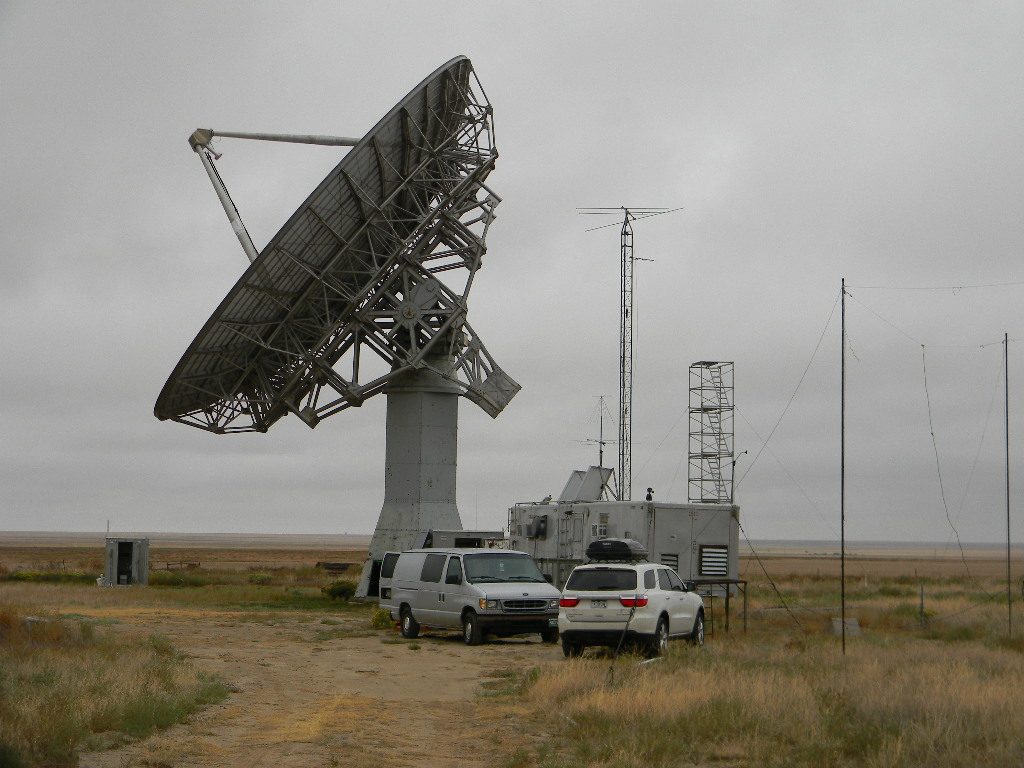
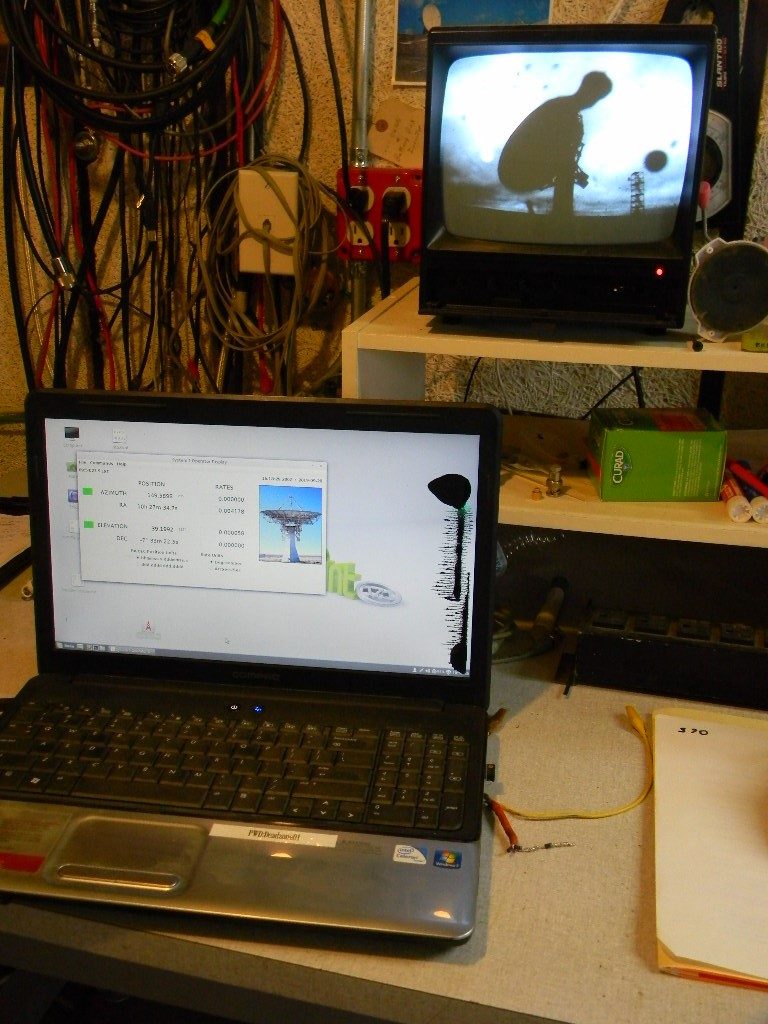

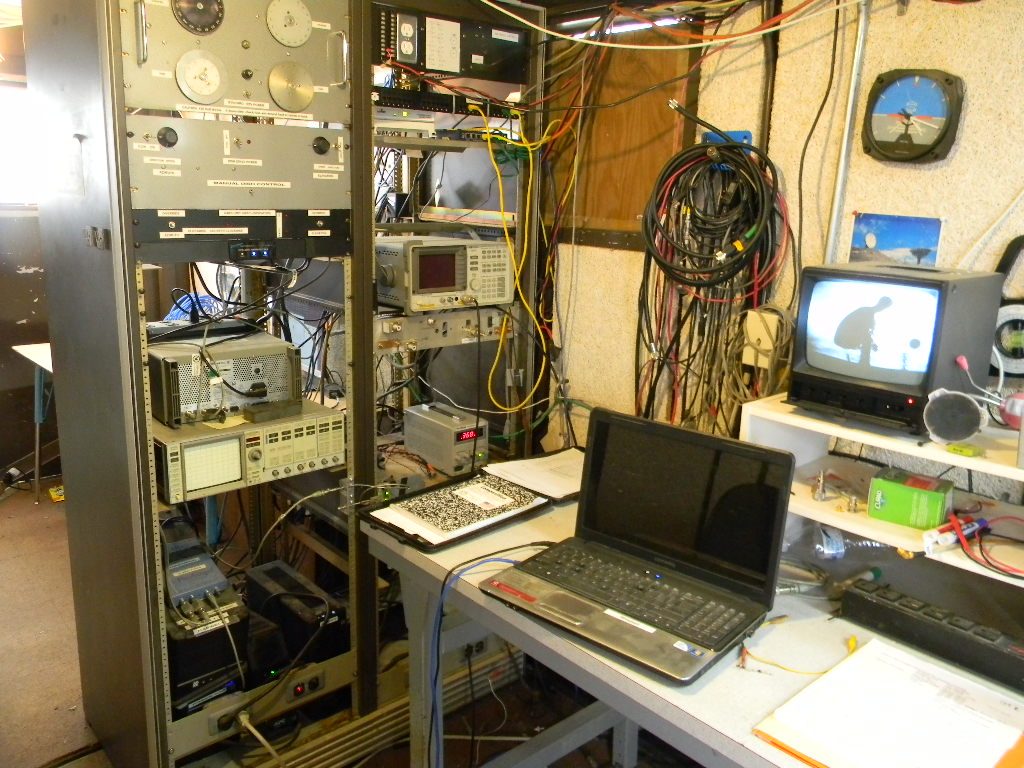
Bob worked at the Communications Trailer, doing carpentry and painting work. He built a wood frame seal around one of the air conditioners, fabricated and painted a seal for the solar-powered fan, and painted the third work table he had added previously. Bob told me the trailer back door hadn’t been sealing — until recently — because it actually had not been closed properly. He closed the door properly and it is now sealed, without requiring further work.
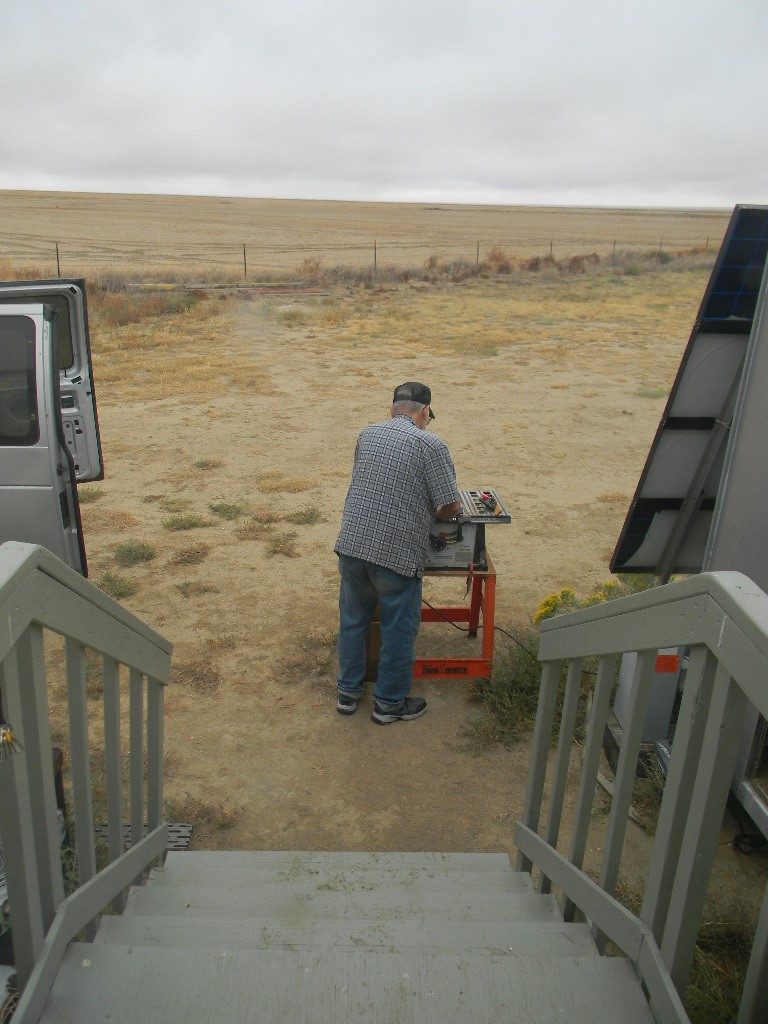
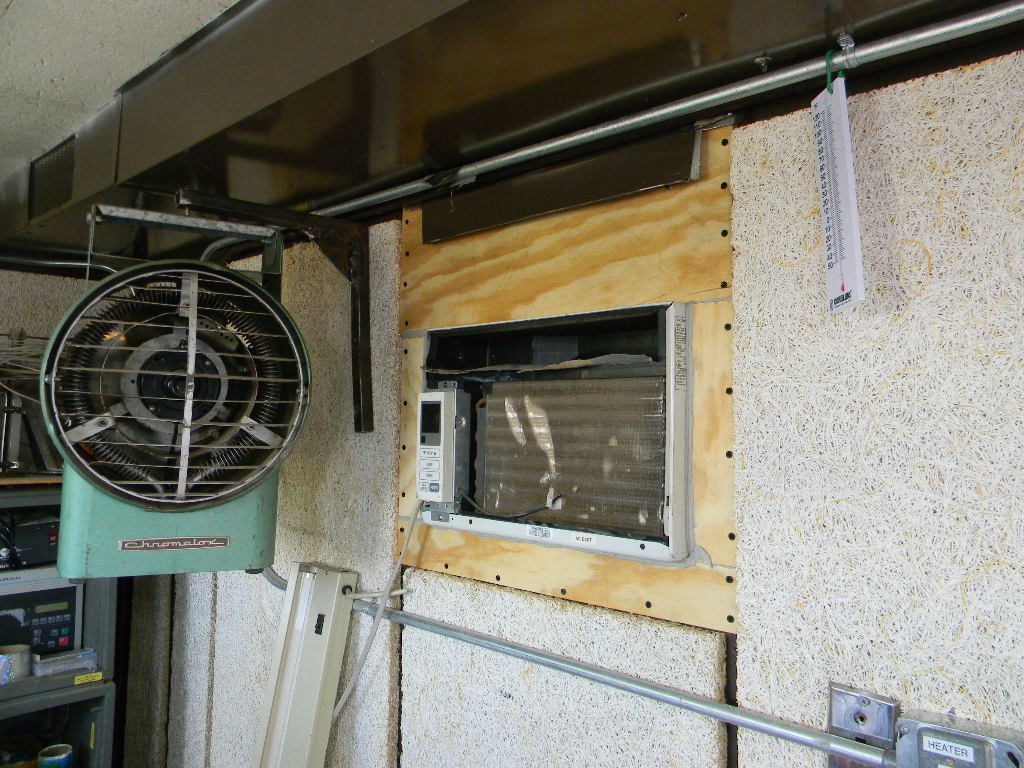
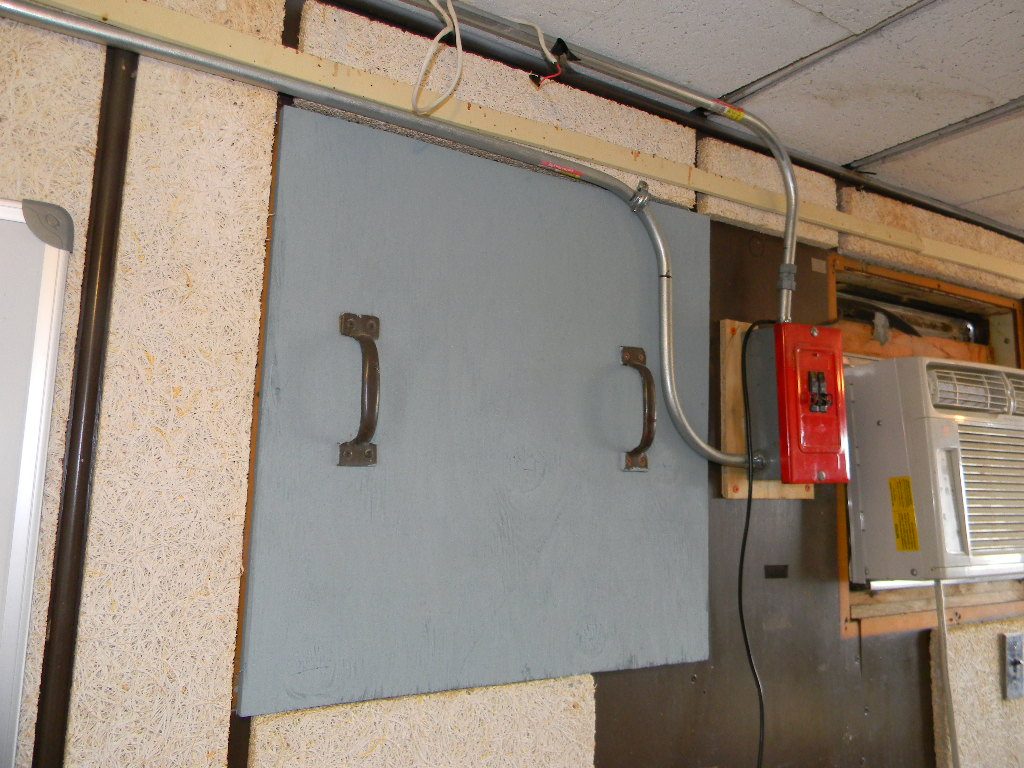


Bill, Steve, and Gary worked on preparing the 50-foot ham radio antenna tower.
Bill spliced the controller feed cable and wires for the antenna rotator, and verified proper operation, with some assistance from Gary. Bill used Steve’s crimping tools. The three of us then fed the controller cable through the dog house to the tower.

At the tower outside, the rotator was attached to its base plate, and that assembly was then attached to the tower.

When we tried to fit the mast in the holding tube at the top of the tower, we found that top opening was slightly damaged, and the mast wouldn’t fit in. We then took turns filing and grinding out the hole until the mast did fit properly. Steve applied a lubricating grease, to mitigate against the mast binding stuck when rotating. Eventually we successfully installed the mast to the rotator itself. We also retrieved a guy wire cable left at the communications trailer and attached it as the third guy wire connection for the top of the tower.
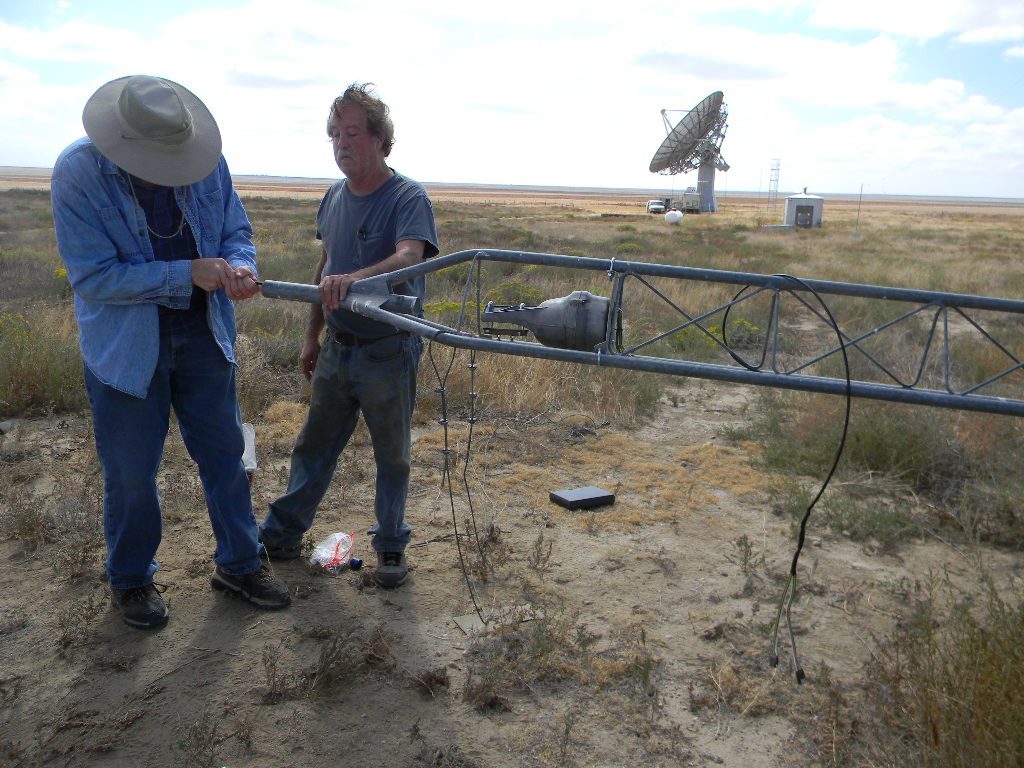
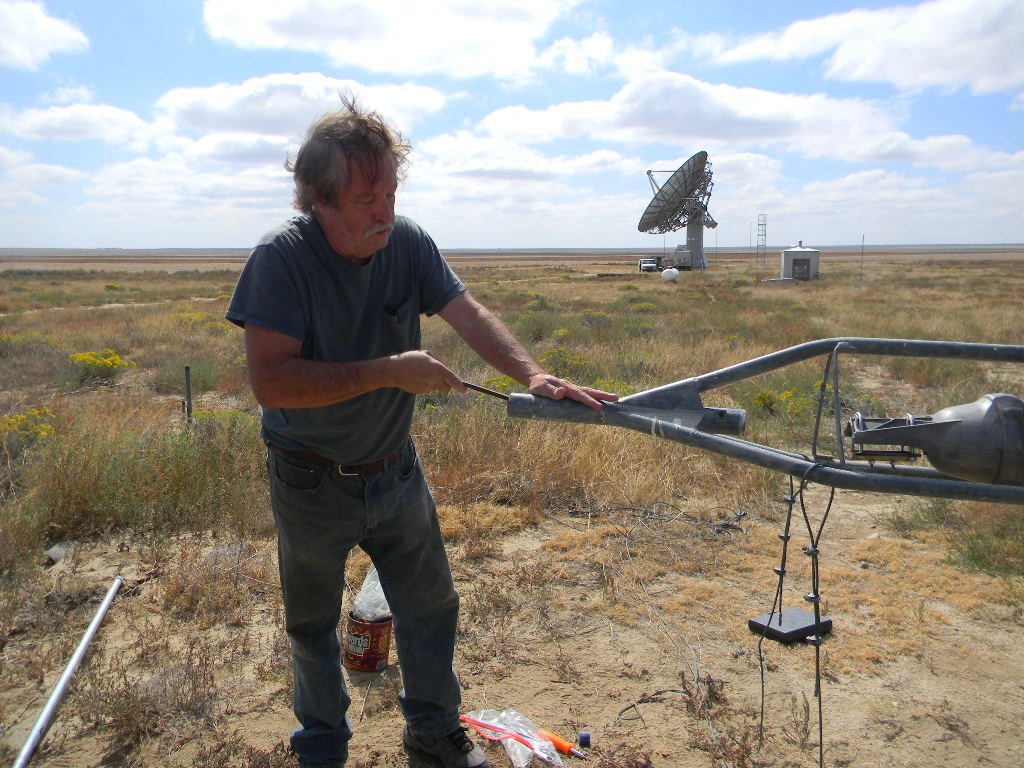
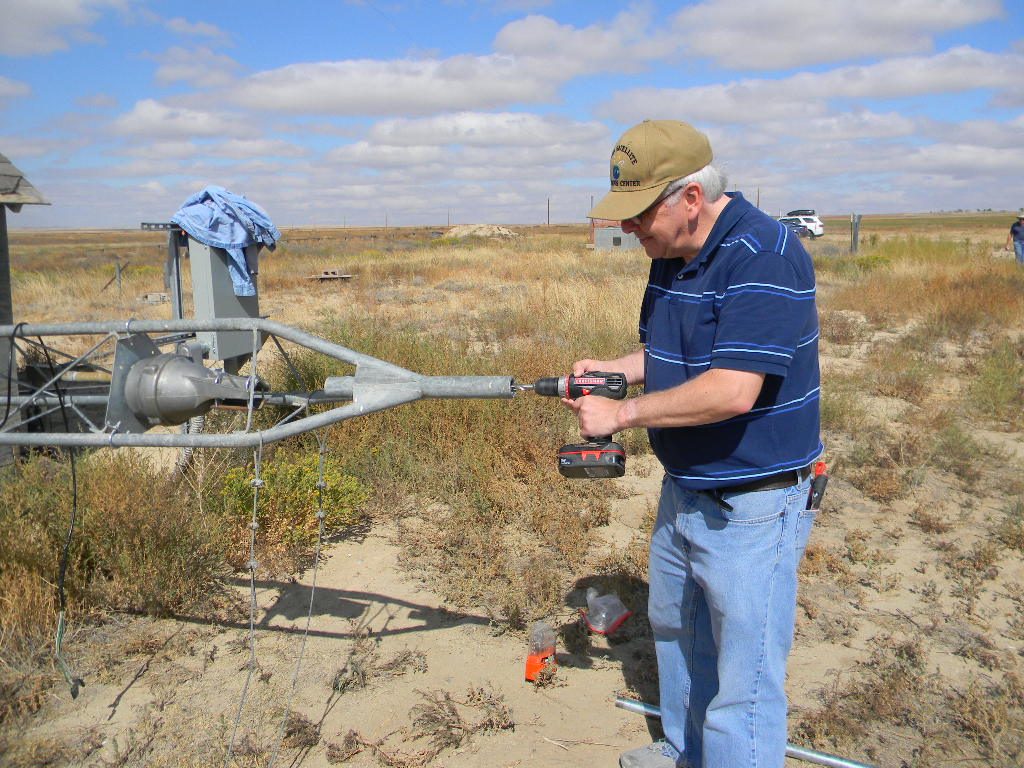
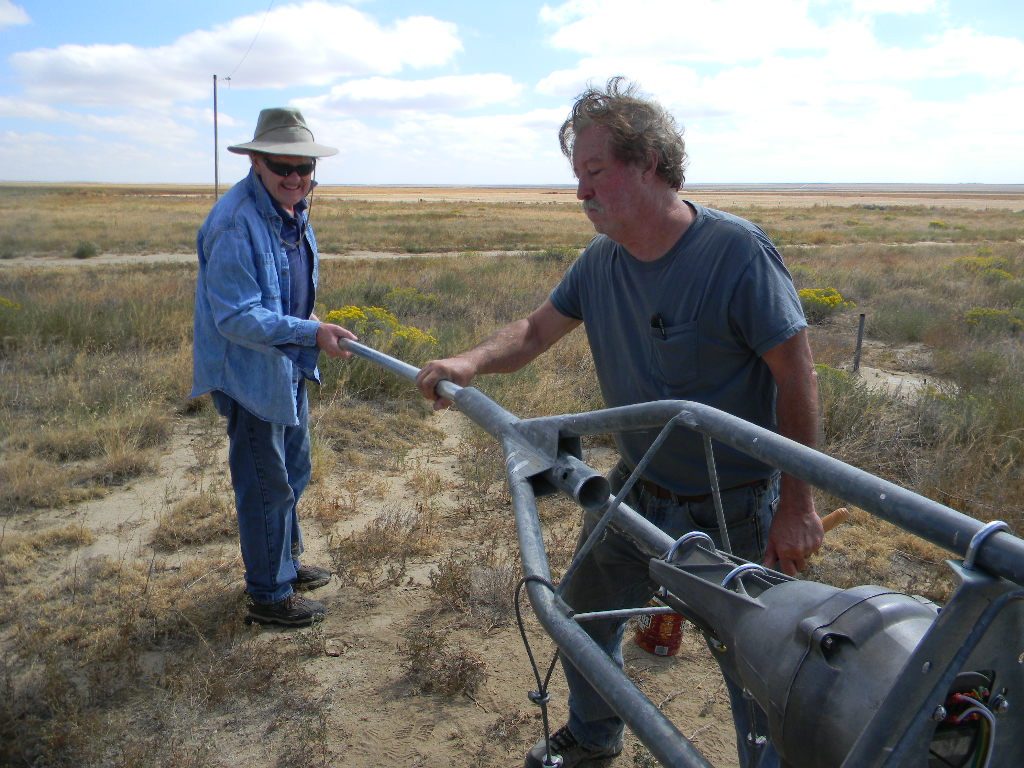
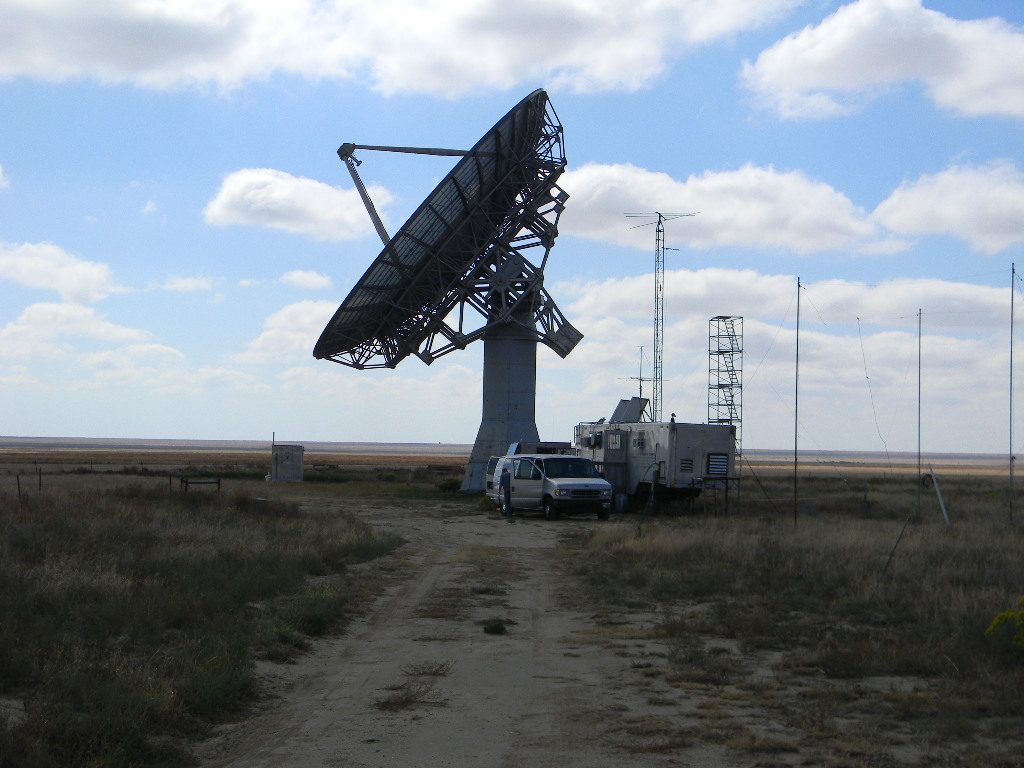
Before we left for the day, we had two visitors from Eads come to look at the site. We all spent a little while talking about the site and the work.
By Gary Agranat
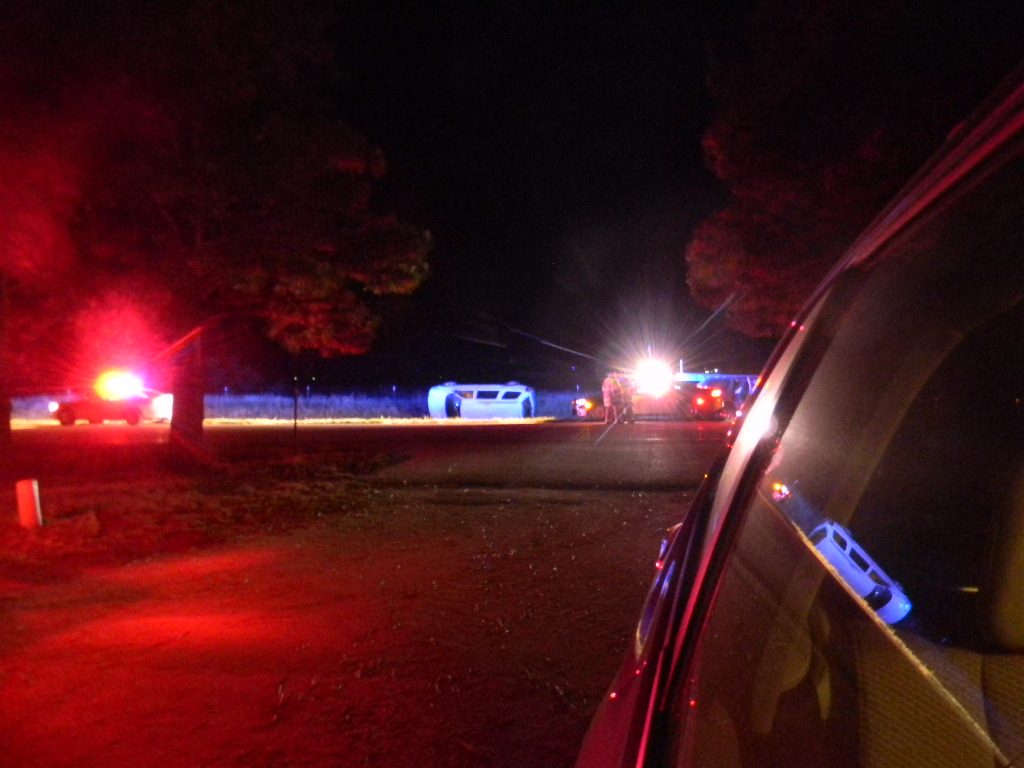
Bob was the first to leave, then Steve. Steve said he would check on Ed on the way home. Bill and I (Gary) convoyed out last.
While Bill and I were driving back to Colorado Springs, about an hour and a half into the trip back, an auto accident happened right in front of us, with a vehicle overturning.
The accident happened while we were driving westbound on Colorado Highway 94. It was early evening by then, about 5:30 pm, and the sun appeared above in the western sky. Bill and I had been talking on the VHF ham radio during our 2 1/2 hour drive back from the site. Bill was driving ahead of me.
A couple of miles before Rush, I saw three vehicles approaching from a long distance behind, moving faster than Bill and me, while we were going at about the speed limit. I mentioned the vehicles to Bill, and we stopped talking, anticipating they would choose to pass us soon. They did soon pass us, all three staying close to each other. We could see they were some sort of laborers, with equipment filling their vehicles and with ladders on top. The third vehicle passed us as we were going up a hill, with the solid yellow line on our side. Bill commented that car was taking risks, although they all were driving in a risky manner. There was no visibility over that hill. And furthermore we were driving into the sun. A couple of miles later we reached the town of Rush, where the speed limit lowers from 65 to 50 mph. As those three vehicles ahead approached the town, I suddenly saw the last one veer to the left side of the road, and then roll over, with its front turned facing the opposite direction. Bill and I both stopped, as did a driver heading in the oncoming direction who almost got hit. And several more cars stopped briefly. We saw one occupant lie in the grass, but he eventually got up.
Bill had a better view of the accident ahead of me. It looked to him like one of the three vehicles ahead suddenly slowed as he reached the town with the lower speed limit. The sun was right above and ahead of us, which created a greater visibility challenge. The sudden slowing apparently caught the last driver off guard, as he swerved to the right to avoid the vehicle ahead of him. But that put his right side of his car in the grass there, which caused a tire blowout and a swerve then to the left. And he overturned.
The volunteer fire department nearby responded relatively quickly. But we waited about 2 hours for a sheriff’s deputy to arrive, and then another hour for a State Patrol officer to arrive. The State Patrol was who we had to give our witness statements to. We didn’t finish with that until 8:30 pm, and I didn’t get home until 9:30.
The driver of the overturned vehicle eventually got up, but he refused medical help, although we wondered if he nonetheless might have been hurt.
Meanwhile the communities there are small, and everyone there knows everyone else. The other driver who stayed was a local woman school teacher. We chatted with her and also the volunteer firefighters, and with some of the neighbors who stopped to see if everyone was OK.
The State Patrol officer later explained to us that there were 6 accidents in the region called in within a period of 5 minutes, when our accident happened. One happened just about 9 miles further west from us on Highway 94, in the town of Yoder. That accident had injuries, and some of the firefighters who were with us then had to leave to respond to the other accident.
At a minimum, this is a reminder to take care to drive safely, especially with limiting conditions like the sun setting ahead.
by Dr. Rich Russel, DSES Science Lead
Ray Uberecken came over today with another LNA, which we put in series with the first LNA. This did the trick and overcame our cable loss problem. I conducted a small drift scan across the galactic center at -32 Declination. Here is a quick result.
I will spend the next couple of days fine tuning the azimuth pointing and weatherizing the LNAs.
I will forward information to allow certain members teamviewer access if they want.
Thanks Ray and Steve Plock for their technical support!!

The 9 ft dish at Dr. Russel’s house is operational!
It is set up to collect neutral hydrogen frequencies at 1420.406MHz.
Today the dish azimuth was aligned using the Sun and a level.
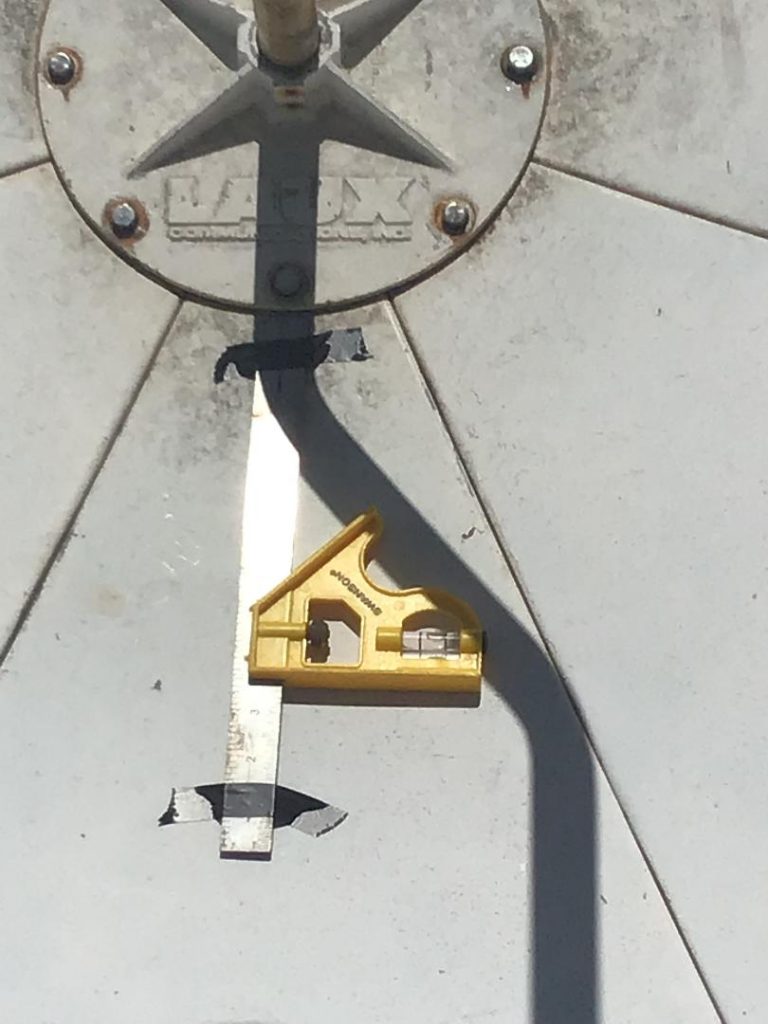
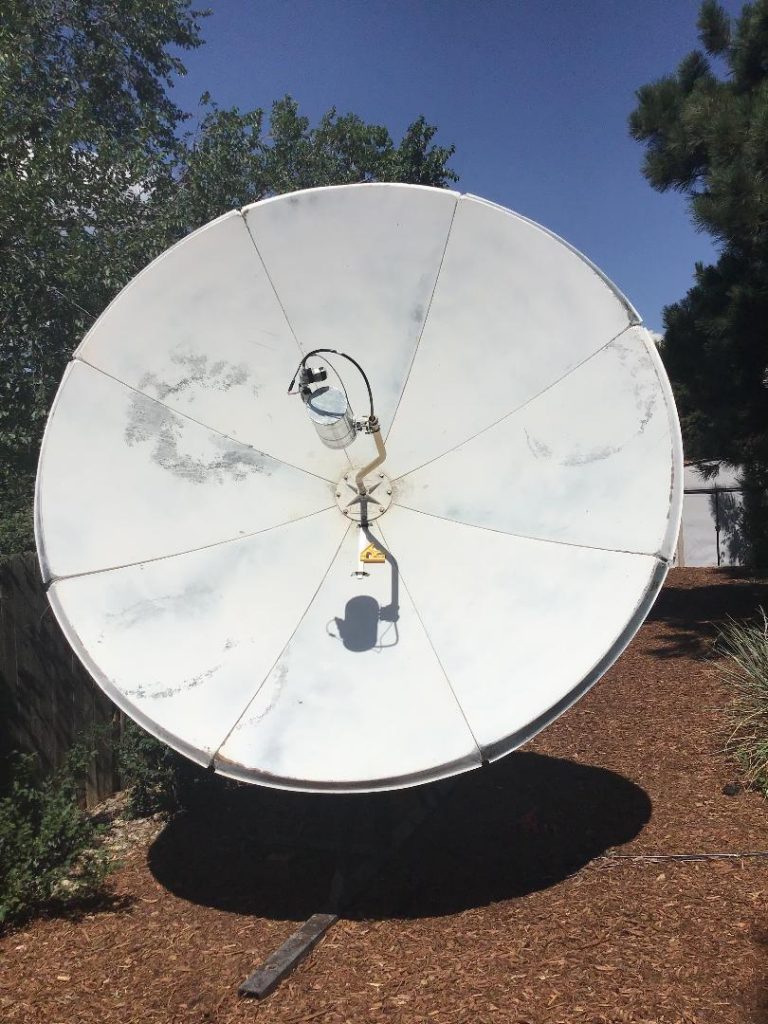
The receiver is a Spectracyber 1 from Radio Astronomy Supplies.
Below is the measurement of the hydrogen spectrum near the galactic center.
RA 17hr 58min DEC -32 degrees

Training on the use of the system will be conducted at the science meetings.
Dr. Russel
By Gary Agranat
Participants: Ed Corn, Steve Plock, Gary Agranat.
Ed, Steve, and I traveled to our radio telescope site, leaving from the Ellicott Fire Department a little after 7:30 am. We encountered just a little fog on the way.
Steve worked primarily on troubleshooting the amplifier failure on the 60-foot antenna fiber optic feed. Steve found a power supply no longer functioned. He wrote me later, “Damaged parts have been ordered and will be replaced at the earliest convenience.”
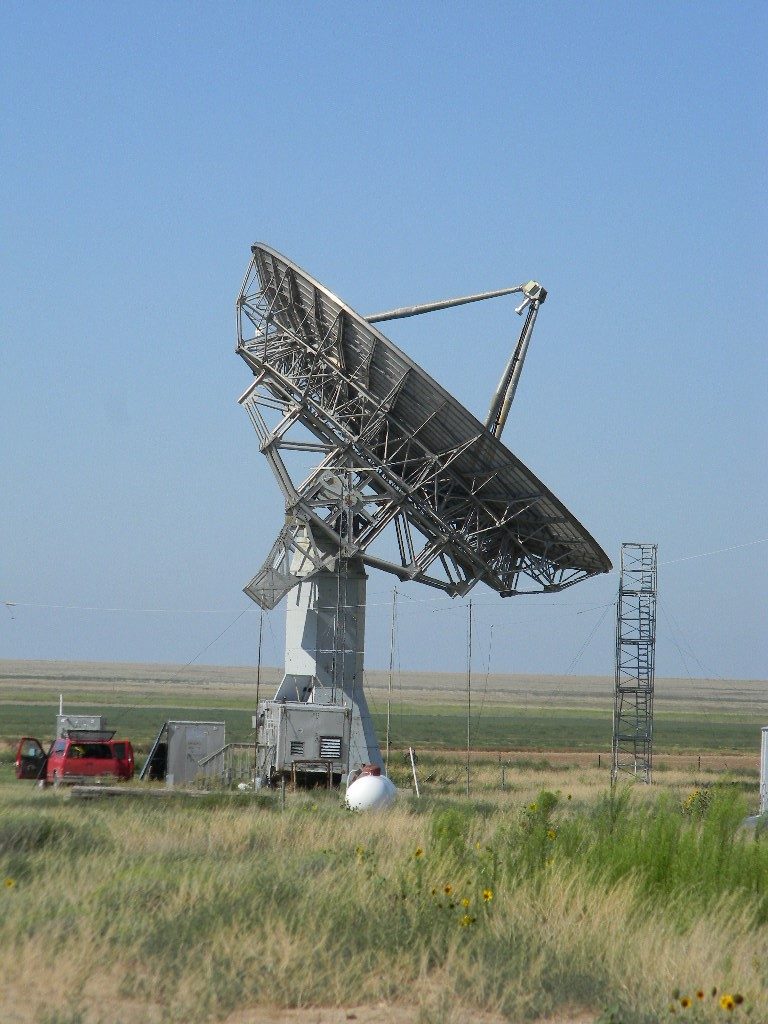
Ed Corn and I worked on assembling the 3-element tri-band Yagi antenna from Myron Babcock, and then the ham radio tower by the bunker, on which the Yagi antenna will go. We measured and reassembled the three Yagi antenna elements and the boom support for them. We’ll wait to combine those until we are ready to attach the antenna to a mast and on to the tower. The antenna will operate on the ham 10, 15, and 20 meter bands. We decided to set the lengths so that the antenna tunes best in the center portions of the bands.
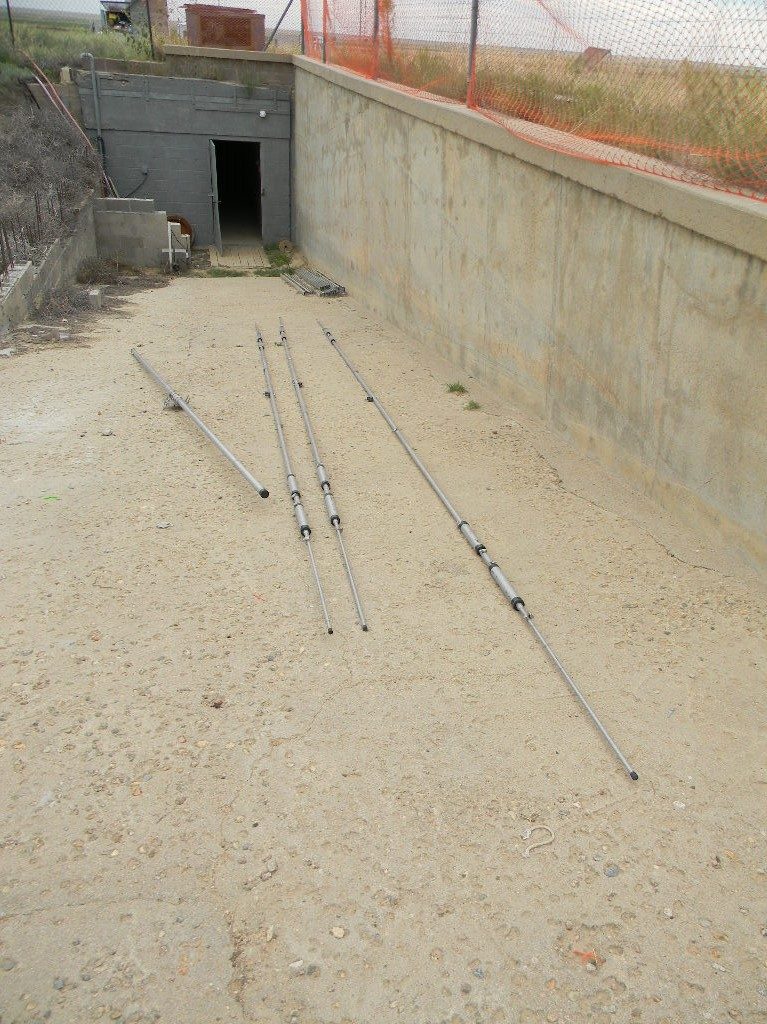
We assembled the tower components out to a length of 50 feet, including the top that will hold the rotor. The tower is now designed and built to rotate from a pivot point next to the existing tower that had been started earlier. Ed climbed that original tower to install the pulley; the pulley leverages and pulls up the 50-foot tower by rotation at the pivot. We tested lifting the 50 foot tower with the hand crank winch that I think came from Steve. The design works. We eventually will need to take down the mast that supports the 80 and 160 meter dipole antennas, to complete the tower build-out. We plan to re-attaching those antennas to the tower itself, when we are ready to complete the tower. Ed has already fabricated two standoffs that will attach to the sides of the tower, and centrally support the dipole antennas.
Ed from time to time went to help Steve. And Steve once in a while came to help with the tower assembly.


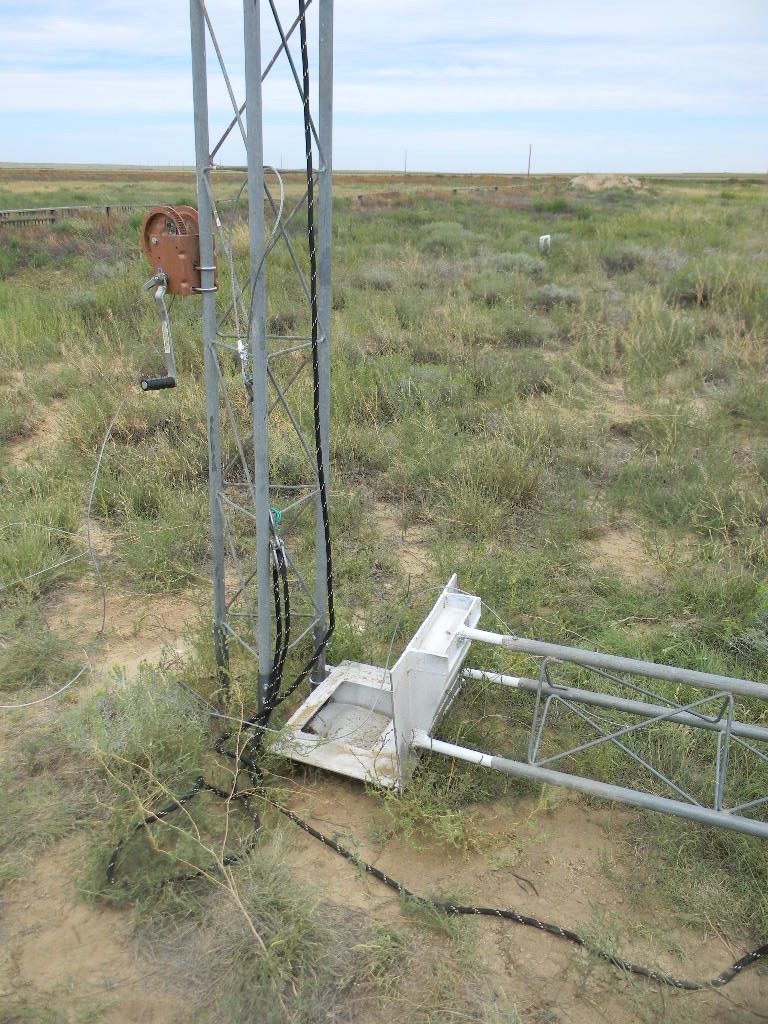
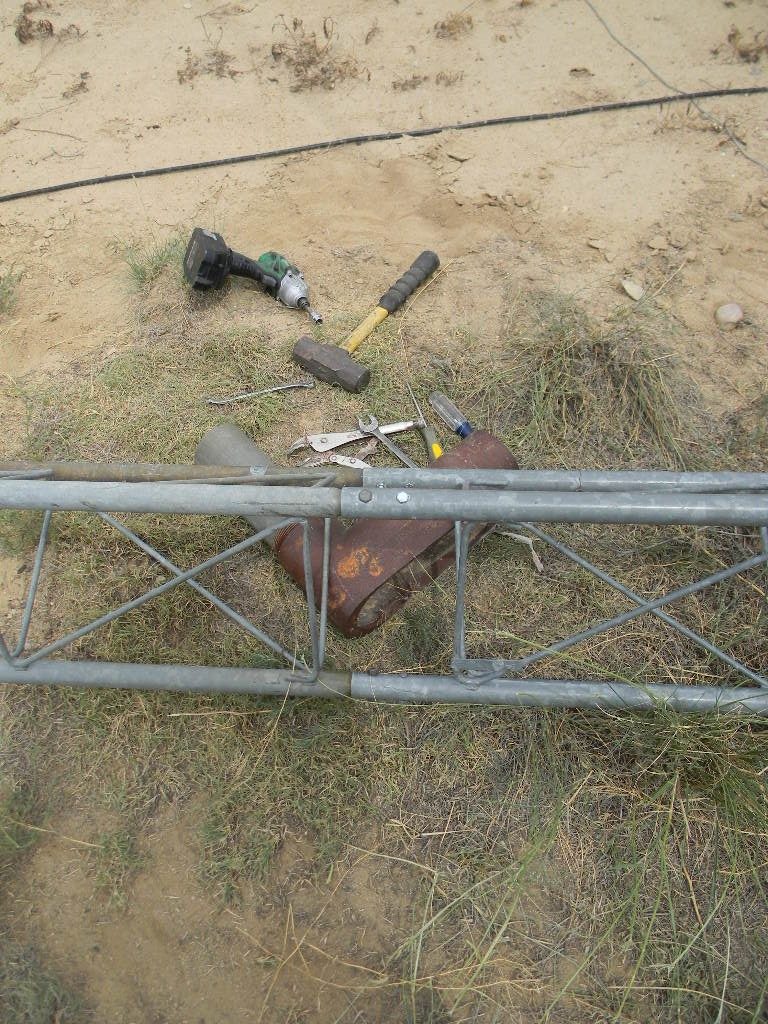
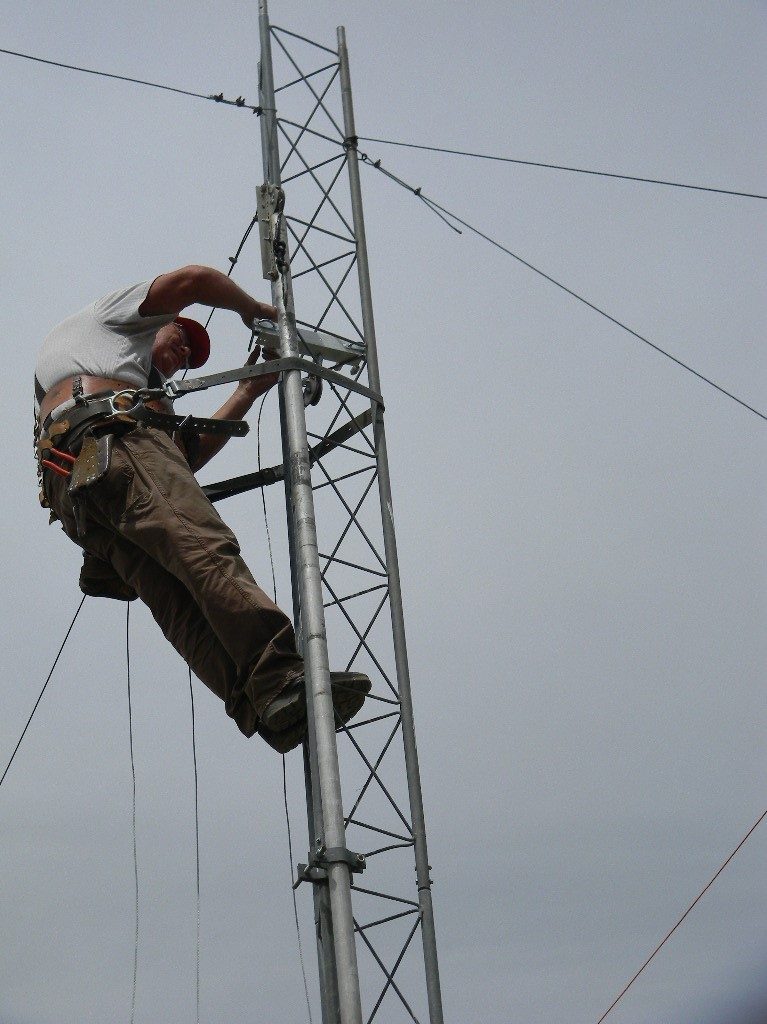

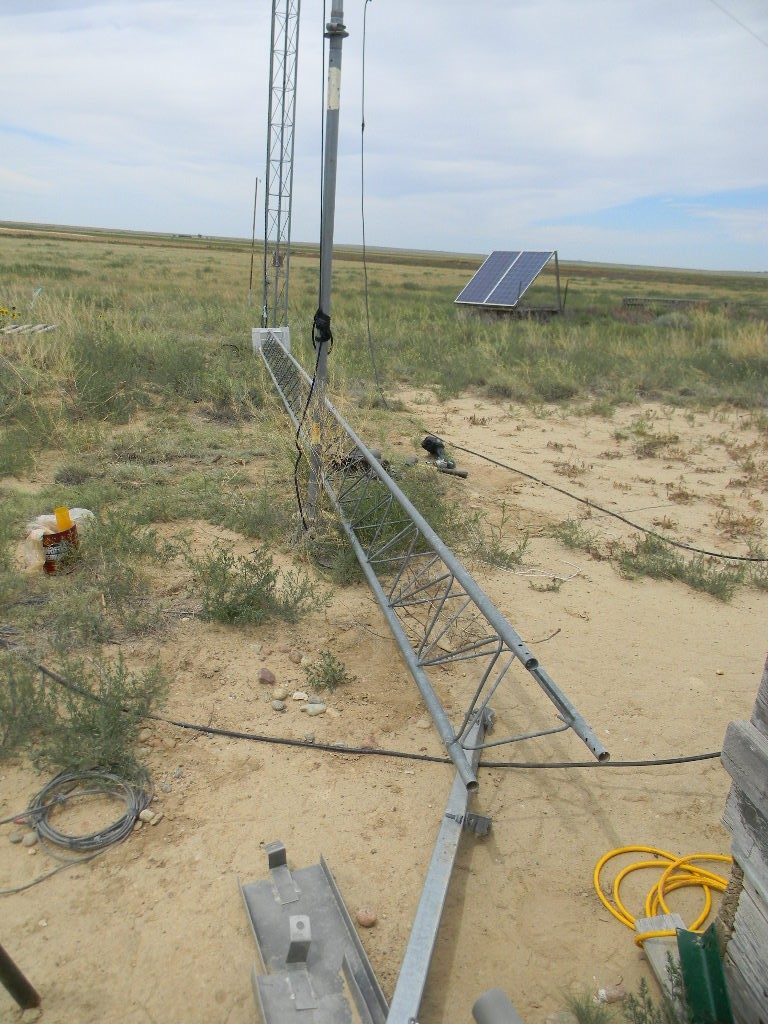
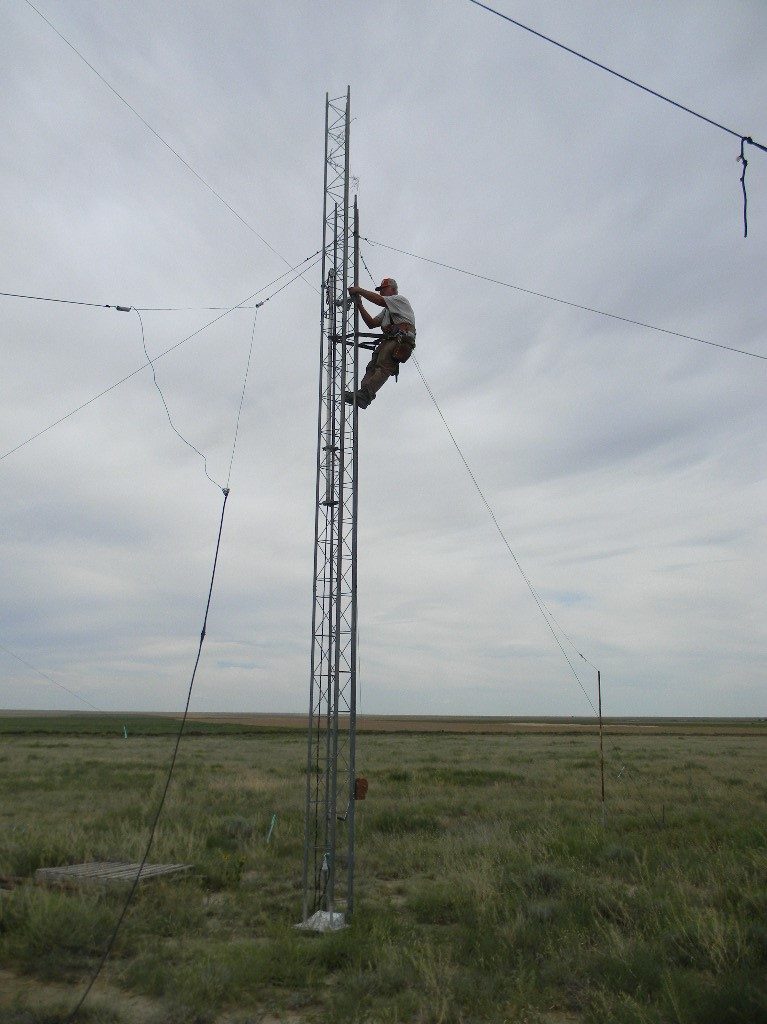

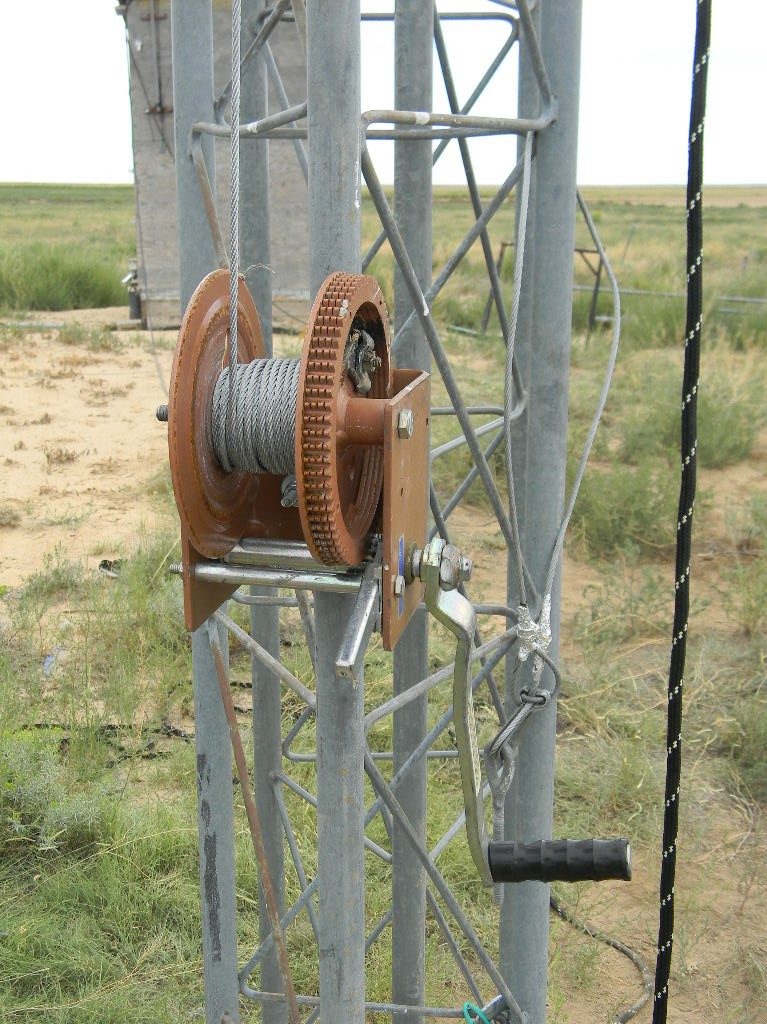
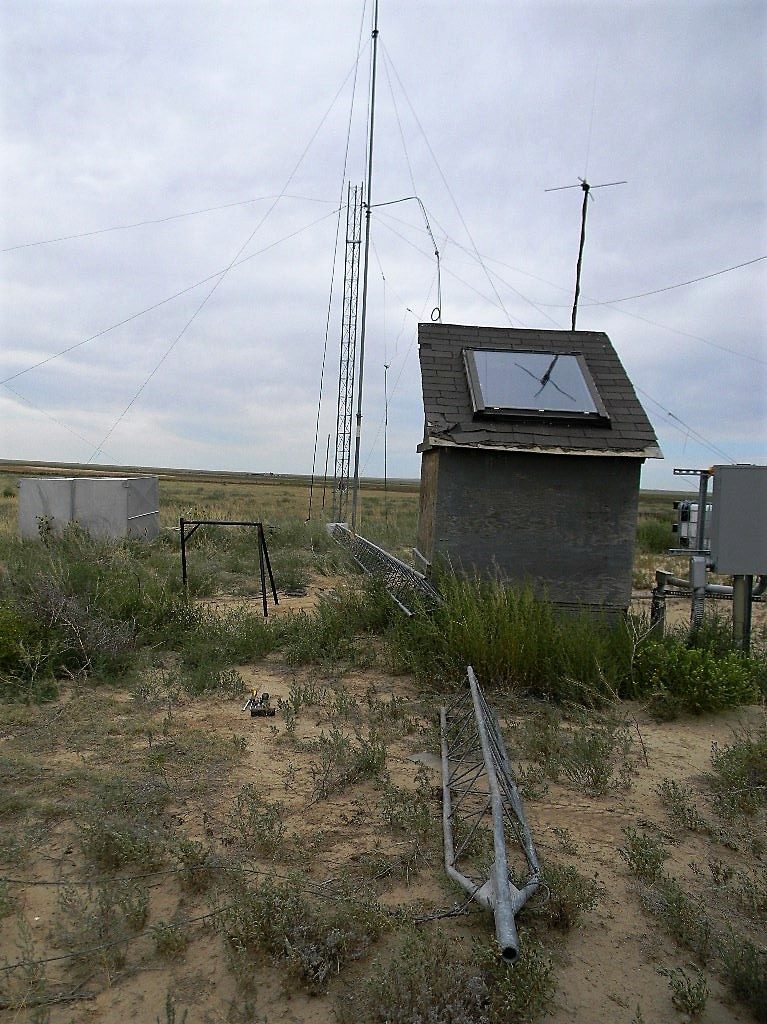
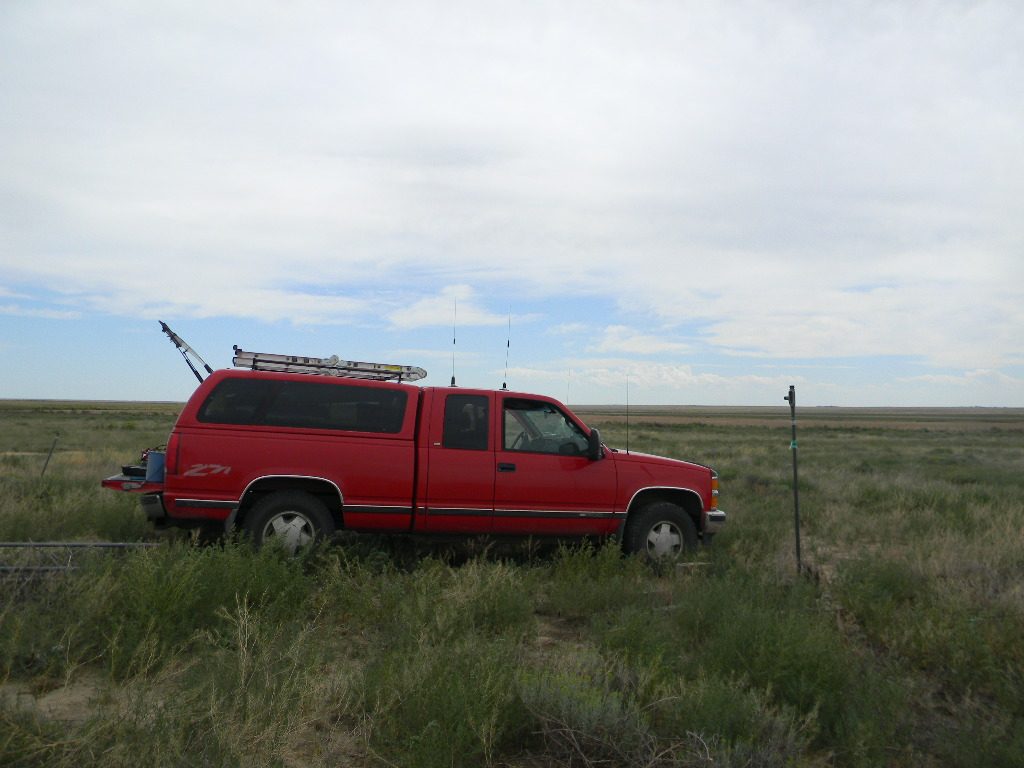
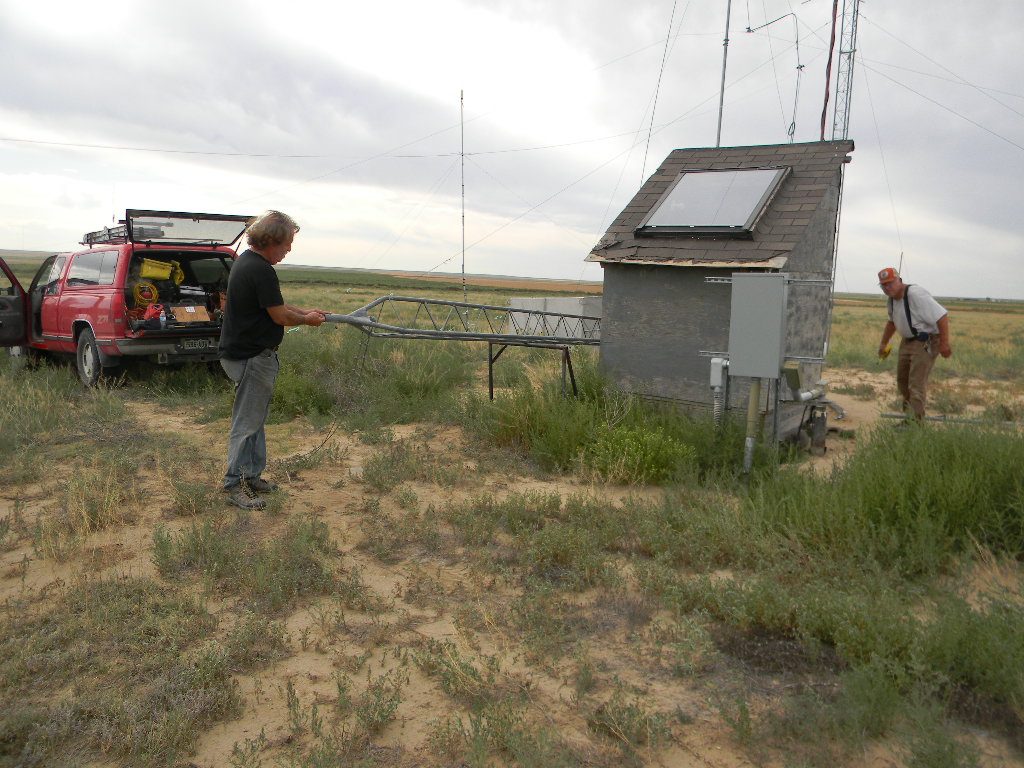
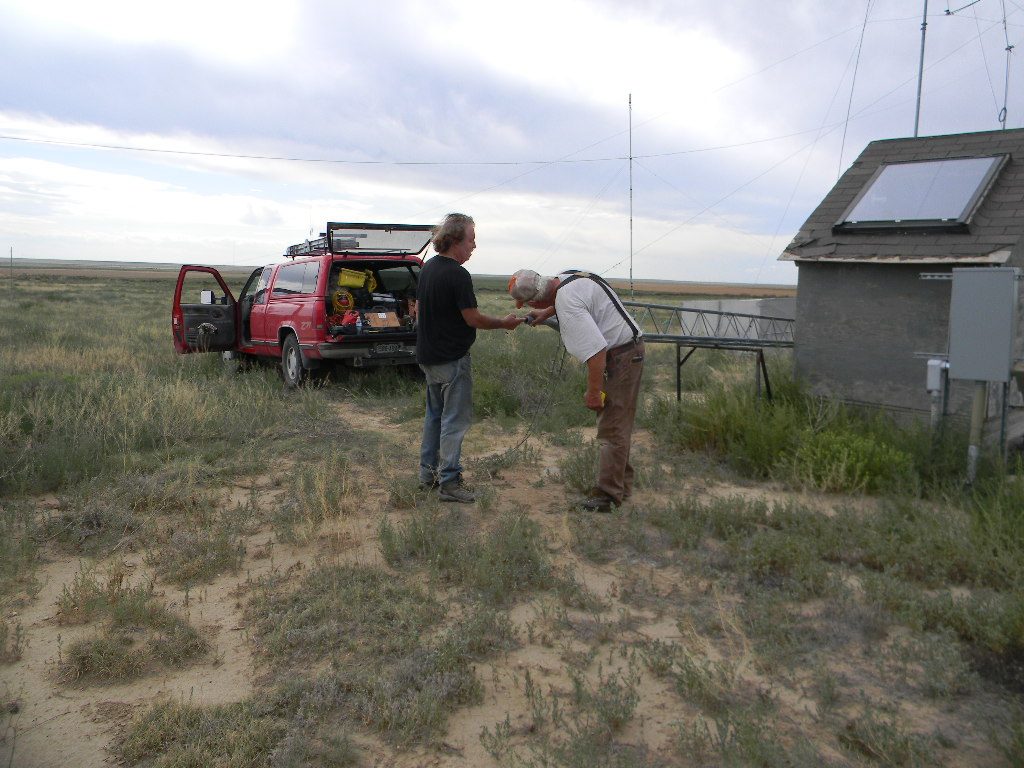
We had a lunch break together in the bunker. I brought a small coffee maker and brewed coffee for Ed and me.
The weather was good, considering the heat we’ve been having lately. High cirrostratus and mid level clouds from storms in the distance covered us for the afternoon, and kept the heat and sunshine comfortable. We saw rain showers in the far distance, but those never came close enough to bother us. The bunker thermometer read 75 F, and outdoors was probably just a little warmer.
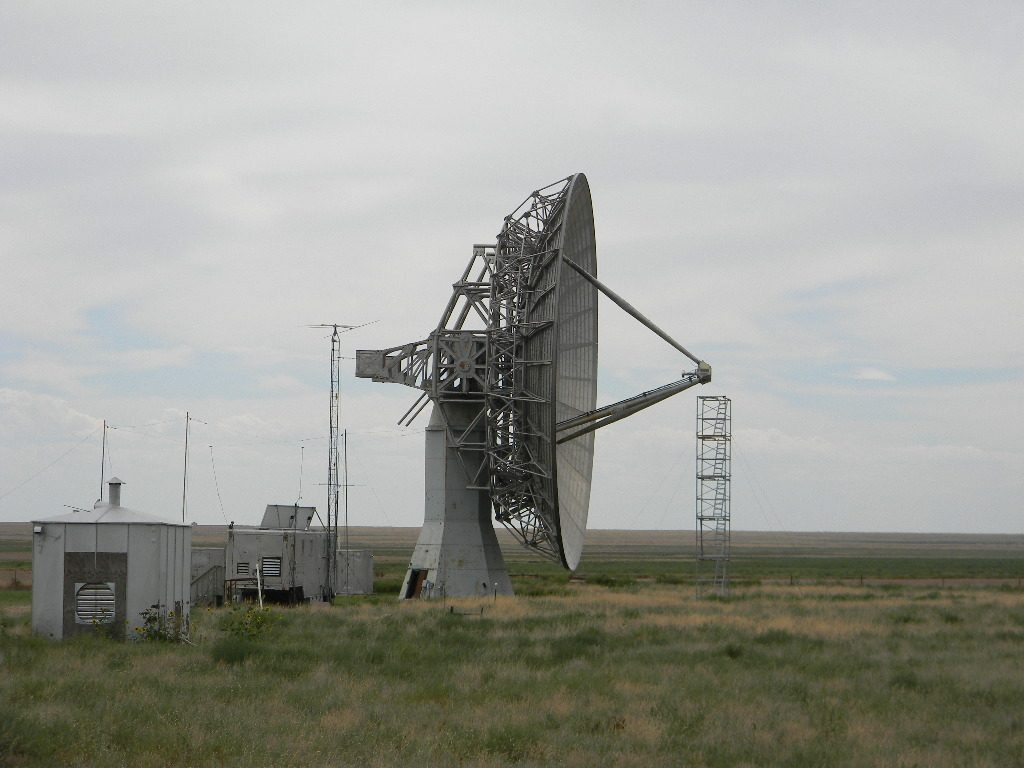
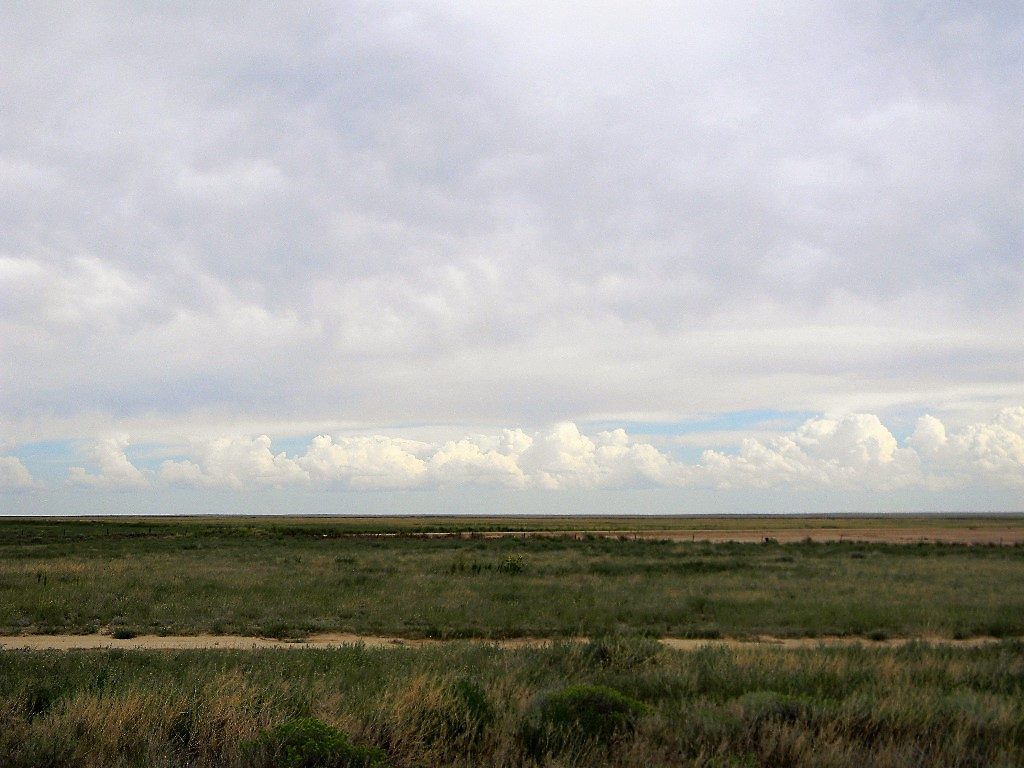
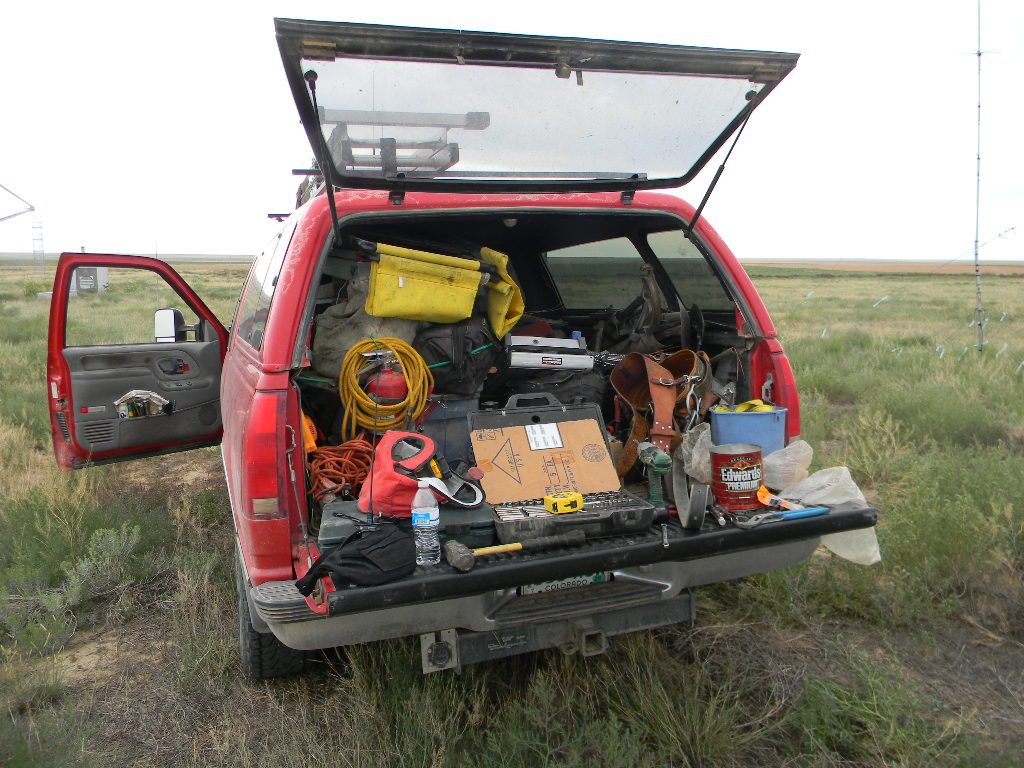
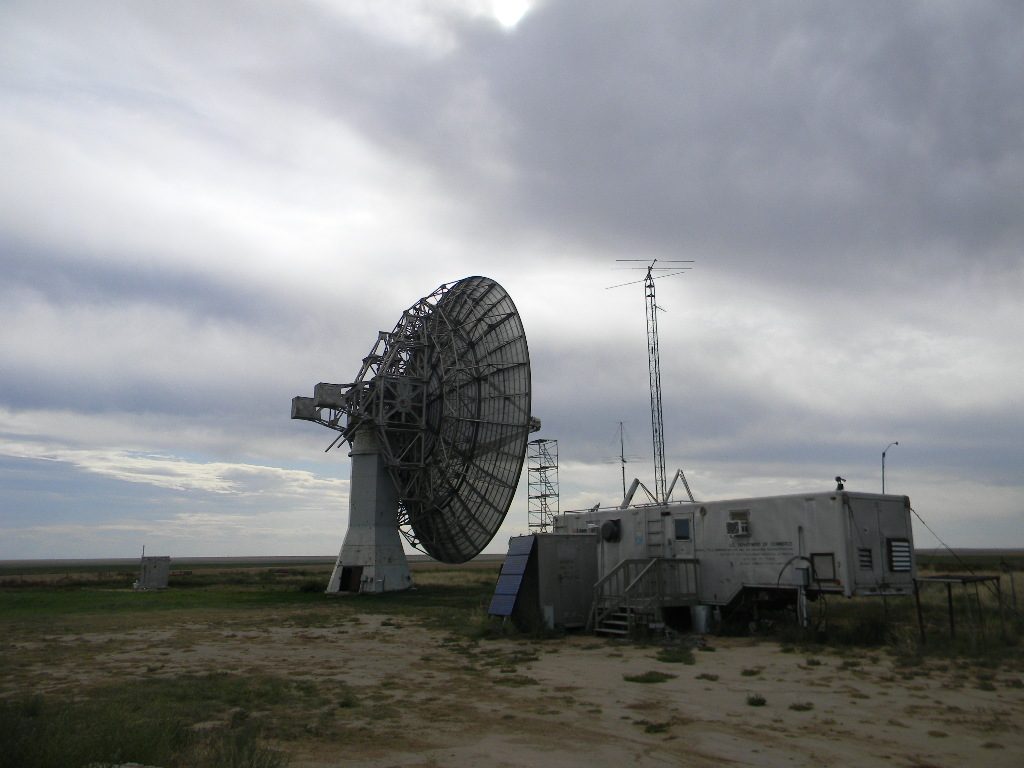
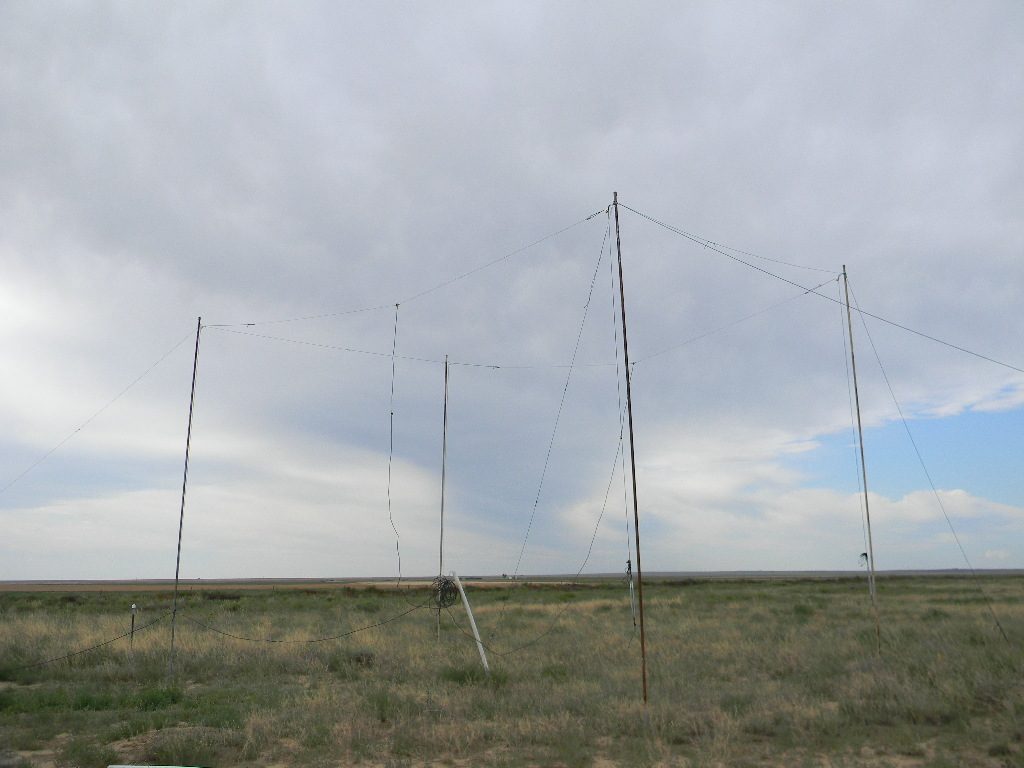
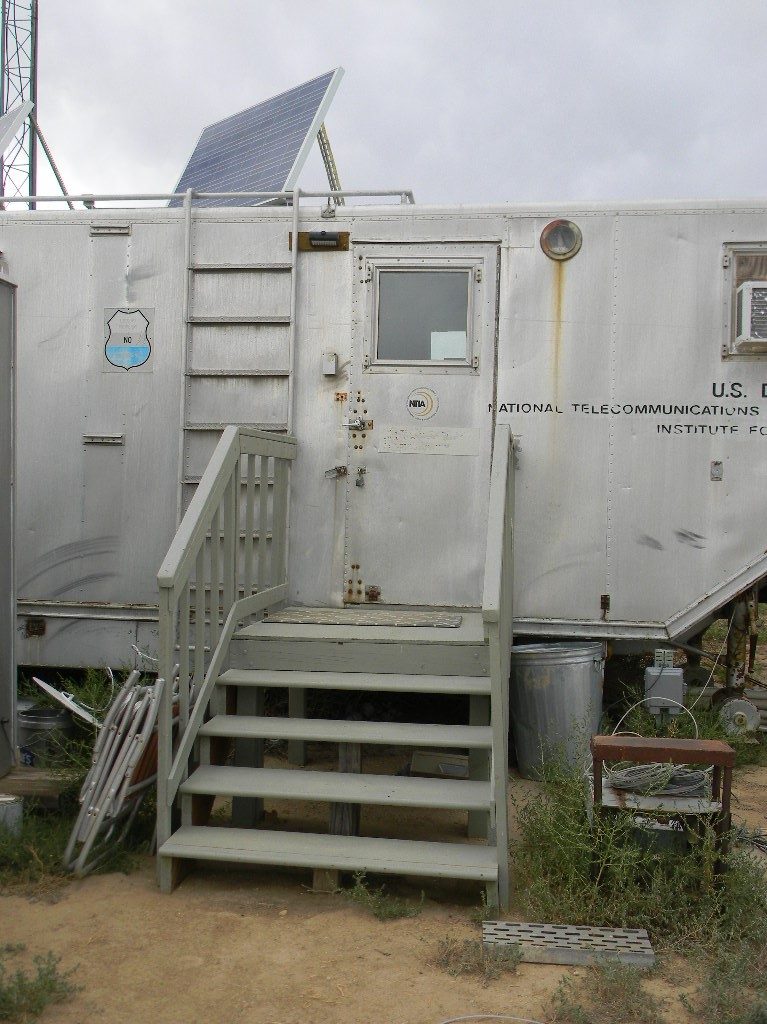

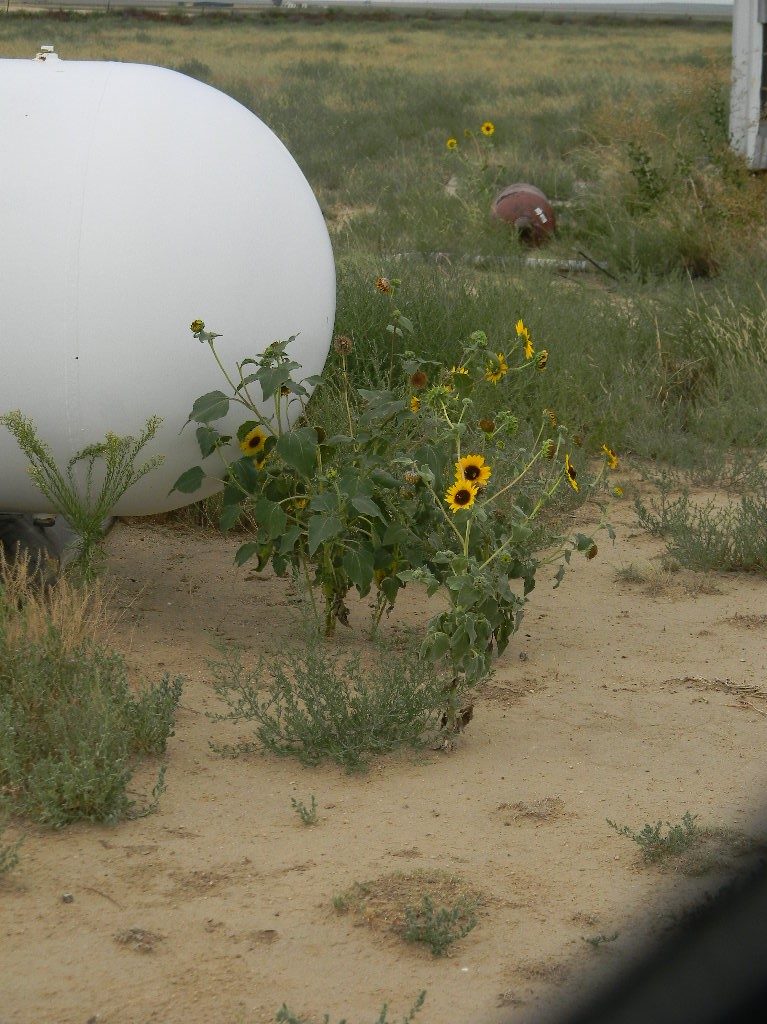

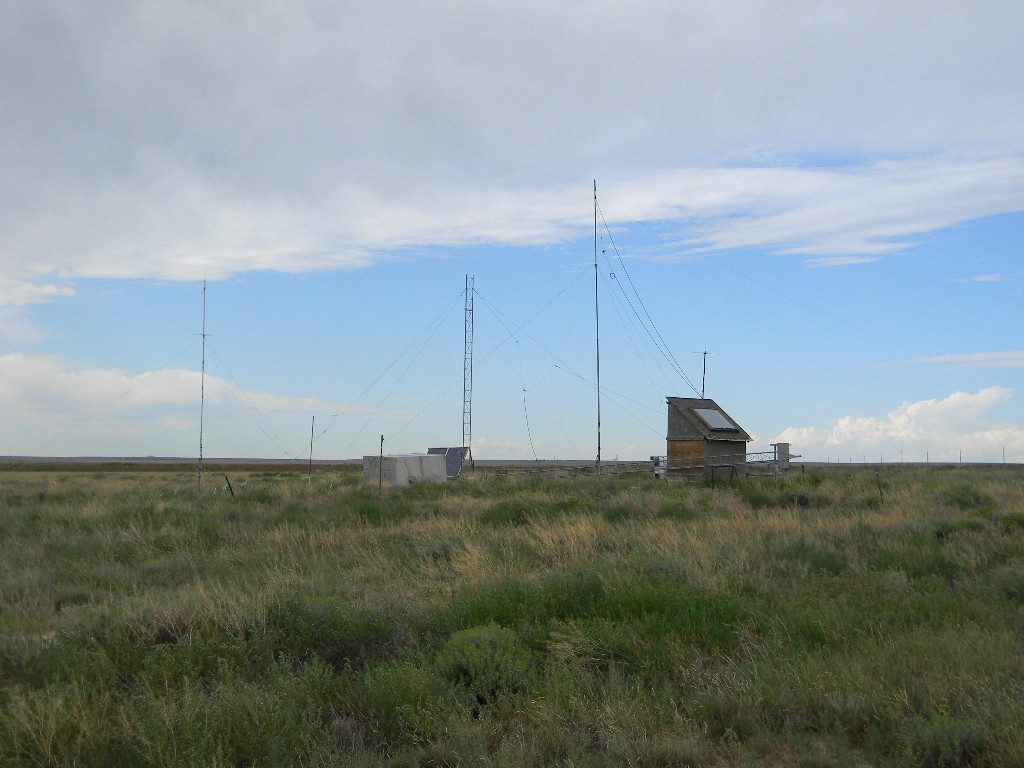

During a break I got on the air at the bunker station, and made 12 contacts for QSO parties that were running: 1 to Hawaii, 5 to Ohio, and 6 to Kansas, on CW and SSB, on 20 and 40 meters. I submitted our logs to those QSO parties later.
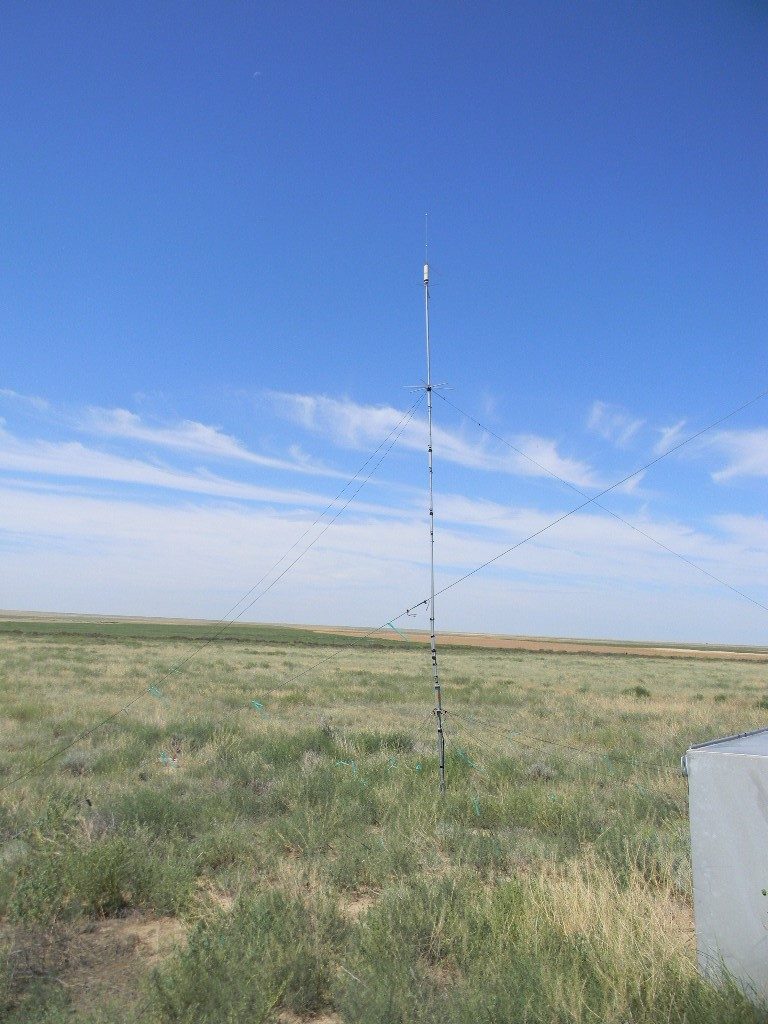
For the team, Gary Agranat.
Here is a quick site trip report on the work the System 1 team (Phil Gage, Lewis Putnam, Dave Molter and Glenn Davis) completed at the Haswell Site yesterday (8/17/2019):
| Voltage (V) | Azimuth Rates (Degs/Sec) | Notes |
| 0.00 | 0.00 | Minimum Potentiometer Setting |
| 0.20 | 0.04 | |
| 0.39 | 0.08 | |
| 0.50 | 0.11 | Normal Potentiometer Setting |
| 0.75 | 0.17 | |
| 1.50 | 0.33 |
| Voltage (V) | Elevation Rates (Degs/Sec) | Notes |
| 0.05 | 0.06 | Minimum Potentiometer Setting |
| 0.17 | 0.07 | |
| 0.35 | 0.08 | |
| 0.75 | 0.11 | |
| 1.52 | 0.15 | Normal Potentiometer Setting |
| 3.72 | 0.30 | |
| 4.24 | 0.34 | |
| 5.00 | 0.42 |
Please note: We were unable to produce zero rates on the elevation axis – even with the potentiometer turn all the way down.
Additionally, though we believe we returned the potentiometers back to their normal positions, whoever returns to the site for the next data collection, please ensure the potentiometers are at their normal positions before use.
Glenn Davis
This is Skip Crilly‘s updated paper/presentation, “Radio Search for Extraterrestrial Intelligence SETI is fun ! Geographically-spaced Synchronized Signal Detection System“, updated July 2019. Skip presented it at the Society of Amateur Radio Astronomers conference at Greenbank, WV on August 4, 2019. The link will open as a pdf file.
These two wave files are part of the presentation: Figure 9 Simultaneous Tones Slow wave file and Figure 9 Simultaneous SETI Tones wave file.